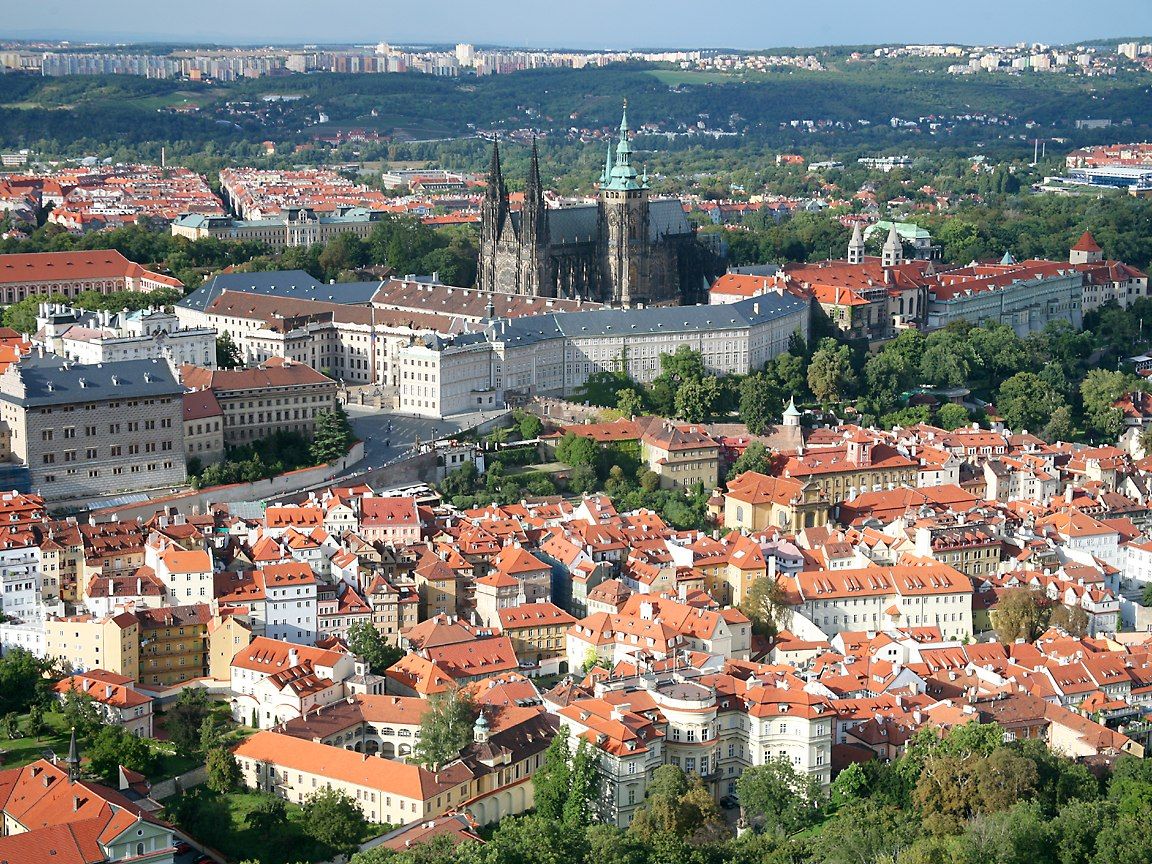
漢德百科全書 | 汉德百科全书
 Mitglieder der NATO
Mitglieder der NATO
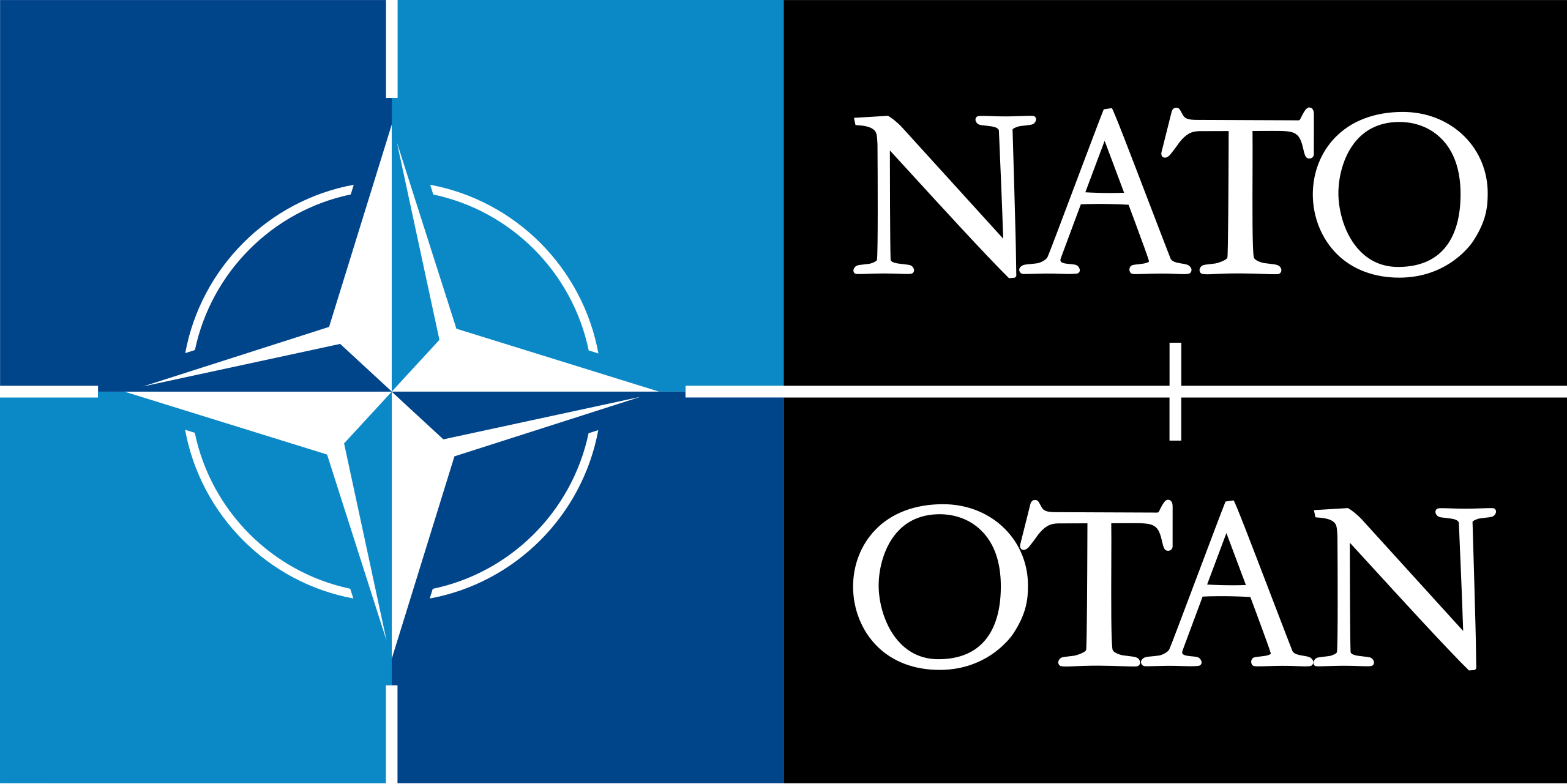
 Denmark
Denmark

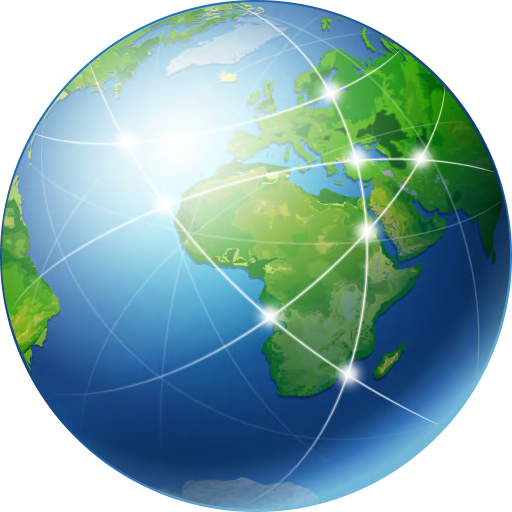 Geography
Geography

 Geography
Geography
 ***IMF Developed countries
***IMF Developed countries
 IMF Developed countries
IMF Developed countries
 IMF Developed countries
IMF Developed countries
 TOP5
TOP5

 Mitglieder der NATO
Mitglieder der NATO

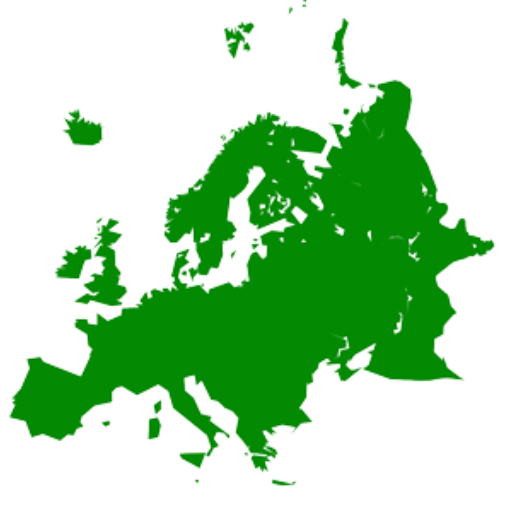 States of Europe
States of Europe

Dänemark (dänisch Danmark [ˈtænmak], amtlich Königreich Dänemark, dänisch Kongeriget Danmark) ist ein Land und souveräner Staat im nördlichen Europa und eine parlamentarische Monarchie. Zusammen mit den Färöern, die wie das Mutterland geographisch zu Nordeuropa gehören, und Grönland, das zu Nordamerika zählt, ist Dänemark ein interkontinentaler Staat. Das Mutterland, der Teil zwischen der Skandinavischen Halbinsel und Mitteleuropa, umfasst eine Fläche von 43.094 km², wovon 23.872 km² auf die Halbinsel Jütland und der Rest auf Inseln entfallen.
Dänemark ist eines der zwölf Gründungsmitglieder der 1949 gegründeten NATO und seit dem 1. Januar 1973 in der Europäischen Union (bzw. ihrer Vorgängerin EWG). Die autonomen Gebiete Grönland und die Färöer führen eigene Flaggen, haben eigene Amtssprachen und gehören zur NATO, jedoch nicht zur EU.
Die einzige Landgrenze hat Dänemark zu Deutschland. Im dortigen, ehemals dänischen Südschleswig lebt eine dänische Minderheit. Im 1866 bis 1920 zu Preußen gehörenden Nordschleswig gibt es eine deutsche Minderheit. Dort ist Deutsch anerkannte regionale Minderheitensprache gemäß der Europäischen Charta der Regional- oder Minderheitensprachen.
丹麦(丹麦语:Danmark),是北欧国家和主权国家丹麦王国(丹麦语:Kongeriget Danmarkn)下的主要构成国,[a]政体为君主立宪制下的议会民主制,首都在哥本哈根,与丹麦王国架构下的两个构成国法罗群岛和格陵兰组成丹麦王国,是全球最北端的国家。由于丹麦和挪威、瑞典有相近的语言、文化和历史,合称为斯堪地那维亚国家。丹麦是欧洲联盟成员国,经济高度发达,同时是个典型的福利国家,贫富差距极小,为世界高度发达国家。丹麦也是北大西洋公约组织创始会员国之一。丹麦政体为君主立宪制下的议会民主制,现任君主是玛格丽特二世女王,中央政府拥有相当大的权力,并负责属地法罗群岛和格陵兰的部分事务。
 *Track and field athletics
*Track and field athletics
 4x100 m Men
4x100 m Men
 *Track and field athletics
*Track and field athletics
 4x100 m Woman
4x100 m Woman
 *Track and field athletics
*Track and field athletics
 4x400 m Men
4x400 m Men
 Atomic bomb
Atomic bomb

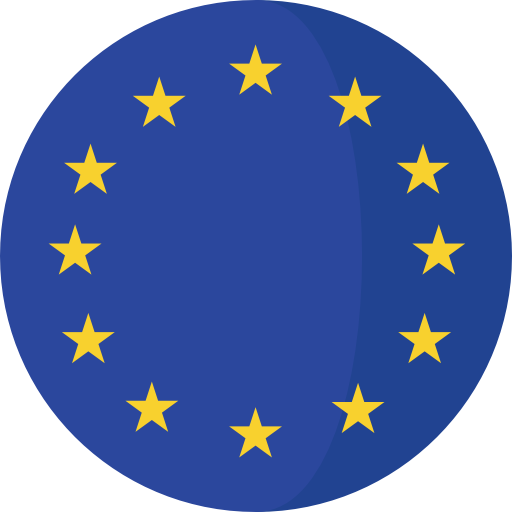 European Union
European Union
 History of the European Union
History of the European Union

 European Union
European Union
 *Founding states
*Founding states
 France
France

 Geography
Geography

 Geography
Geography
 ***IMF Developed countries
***IMF Developed countries
 IMF Developed countries
IMF Developed countries
 IMF Developed countries
IMF Developed countries
 TOP2
TOP2
 Leichtathletik-Weltmeisterschaften
Leichtathletik-Weltmeisterschaften
 2005 Helsinki
2005 Helsinki
 Leichtathletik-Weltmeisterschaften
Leichtathletik-Weltmeisterschaften
 2003 Saint-Denis
2003 Saint-Denis
 Leichtathletik-Weltmeisterschaften
Leichtathletik-Weltmeisterschaften
 2003 Saint-Denis
2003 Saint-Denis

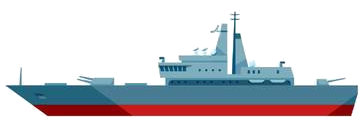
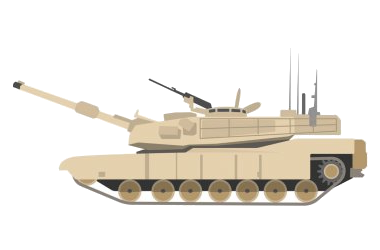
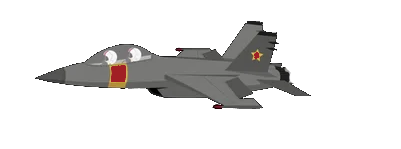
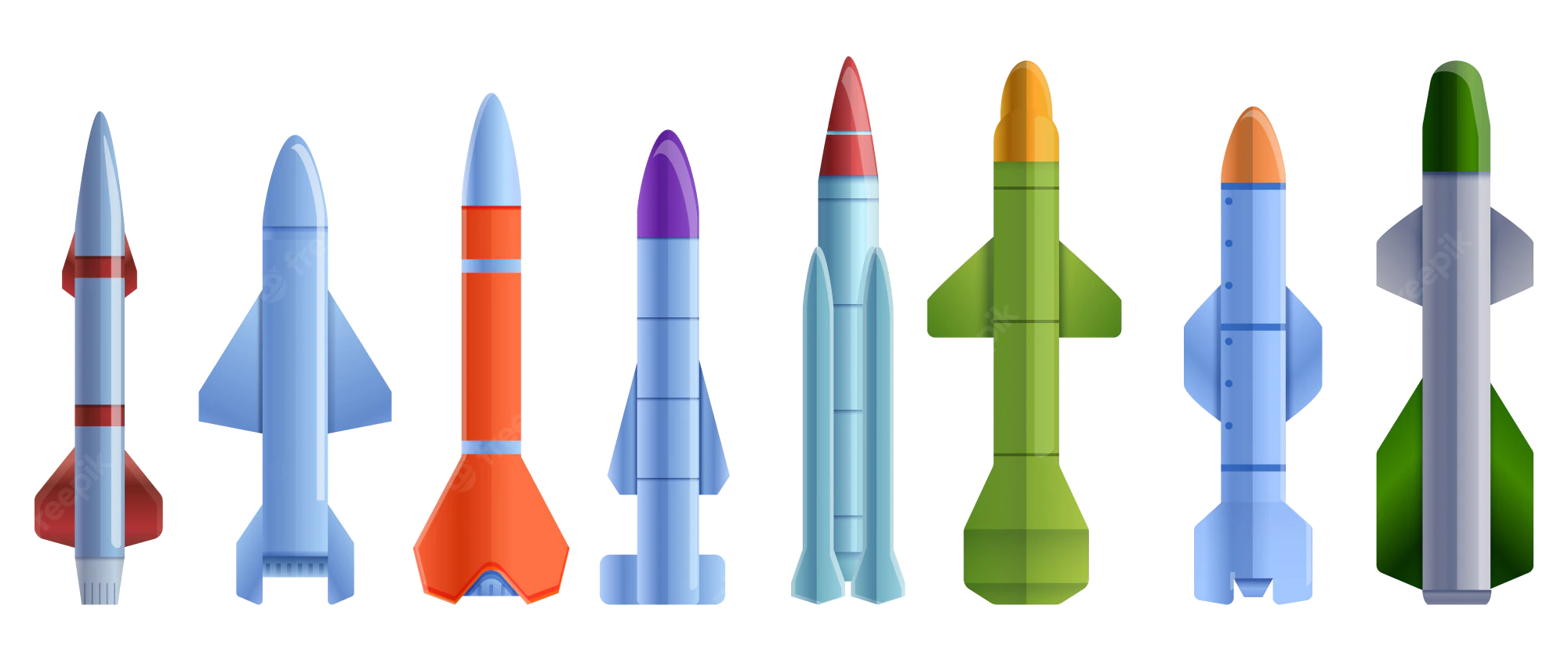 Military, defense and equipment
Military, defense and equipment
 Nuclear Weapon
Nuclear Weapon

 Mitglieder der NATO
Mitglieder der NATO

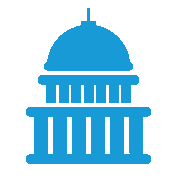 Party and government
Party and government
 Group of the twenty most important industrial and emerging countries
Group of the twenty most important industrial and emerging countries

 Party and government
Party and government
 Group of Seven,G7
Group of Seven,G7

 States of Europe
States of Europe

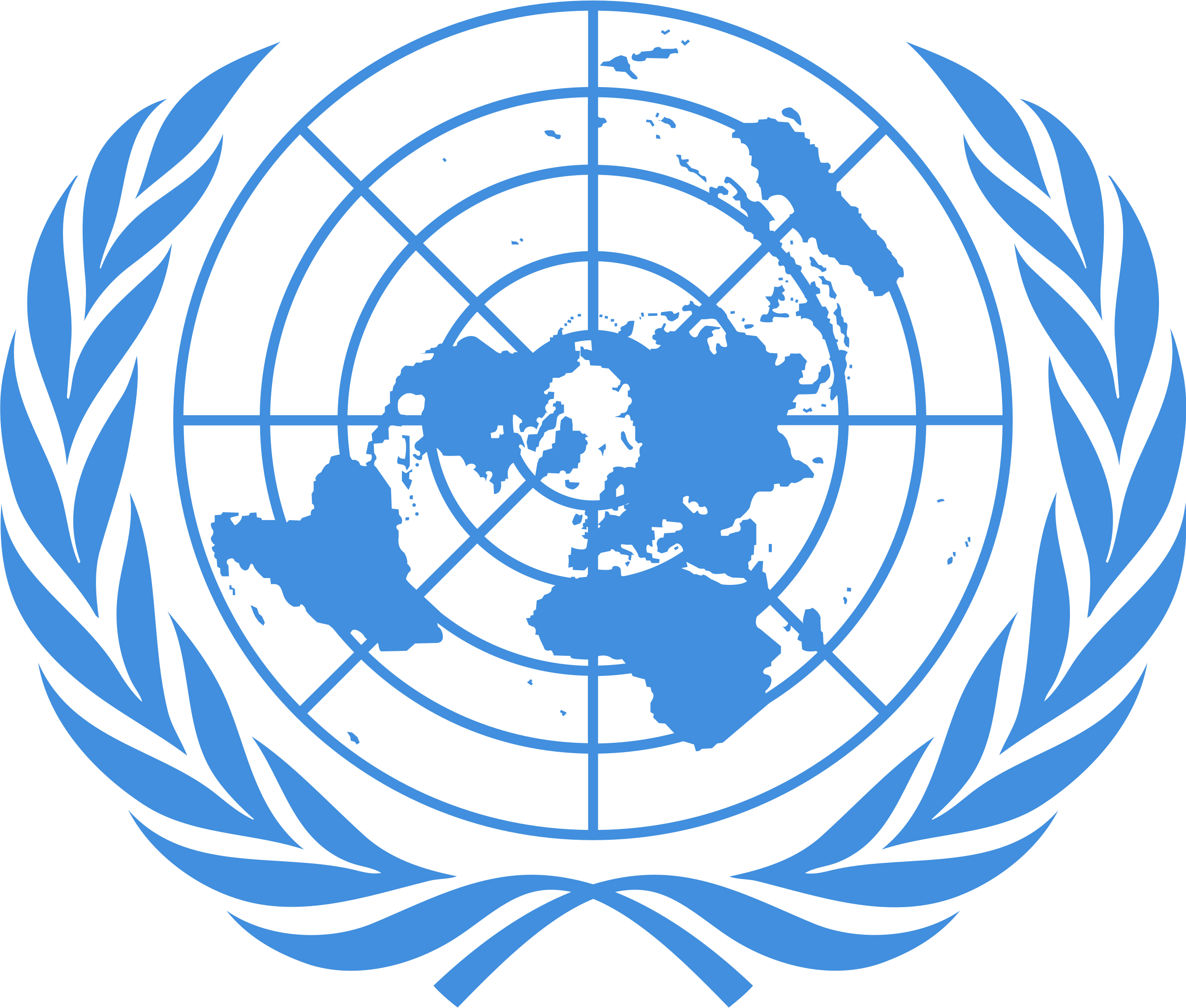 United Nations
United Nations
 United Nations Security Council
United Nations Security Council
 Hydrogen bomb
Hydrogen bomb

Frankreich ![]() [ˈfʁaŋkʁaɪ̯ç] (französisch [fʁɑ̃s], amtlich République française [ʁe.py.ˈblik fʁɑ̃.ˈsɛz], deutsch Französische Republik) ist ein demokratischer, interkontinentaler Einheitsstaat in Westeuropa mit Überseeinseln und -gebieten auf mehreren Kontinenten. Metropolitan-Frankreich, d. h. der europäische Teil des Staatsgebietes, erstreckt sich vom Mittelmeer bis zum Ärmelkanal und zur Nordsee sowie vom Rhein bis zum Atlantischen Ozean. Sein Festland wird wegen seiner Landesform als Hexagone (Sechseck) bezeichnet. Frankreich ist flächenmäßig das größte und nach Einwohnern (hinter Deutschland) das zweitgrößte Land der Europäischen Union. Es umfasst (nach Russland und der Ukraine) das drittgrößte Staatsgebiet in Europa. Paris ist die Hauptstadt und als Agglomeration mit dem Gemeindeverband Métropole du Grand Paris und den umliegenden Gebieten der Region Île-de-France größter Ballungsraum des Landes vor Lyon, Marseille, Toulouse und Lille.
[ˈfʁaŋkʁaɪ̯ç] (französisch [fʁɑ̃s], amtlich République française [ʁe.py.ˈblik fʁɑ̃.ˈsɛz], deutsch Französische Republik) ist ein demokratischer, interkontinentaler Einheitsstaat in Westeuropa mit Überseeinseln und -gebieten auf mehreren Kontinenten. Metropolitan-Frankreich, d. h. der europäische Teil des Staatsgebietes, erstreckt sich vom Mittelmeer bis zum Ärmelkanal und zur Nordsee sowie vom Rhein bis zum Atlantischen Ozean. Sein Festland wird wegen seiner Landesform als Hexagone (Sechseck) bezeichnet. Frankreich ist flächenmäßig das größte und nach Einwohnern (hinter Deutschland) das zweitgrößte Land der Europäischen Union. Es umfasst (nach Russland und der Ukraine) das drittgrößte Staatsgebiet in Europa. Paris ist die Hauptstadt und als Agglomeration mit dem Gemeindeverband Métropole du Grand Paris und den umliegenden Gebieten der Region Île-de-France größter Ballungsraum des Landes vor Lyon, Marseille, Toulouse und Lille.
Im 17. und 18. Jahrhundert hatte Frankreich eine europäische Führungsrolle und Vormachtstellung inne. Bedeutend war die politische und kulturelle Ausstrahlung: Die Hofhaltung Ludwigs XIV. wurde zum Vorbild absolutistischer Staaten in ganz Europa und die Französische Revolution mit der Erklärung der Menschen- und Bürgerrechte gab zusammen mit Okkupationen durch Napoleon Bonaparte in vielen Ländern den Auftakt zu der immer wieder von Rückschlägen unterbrochenen Entwicklung zur Demokratie. In Übersee baute Frankreich zweimal ein Kolonialreich auf. Das erste umfasste u. a. große Teile Nordamerikas und ging großenteils Mitte des 18. Jahrhunderts im Siebenjährigen Krieg verloren; das zweite mit Schwerpunkt in Afrika war im 19. und frühen 20. Jahrhundert das zweitgrößte der Welt. Im 21. Jahrhundert gilt Frankreich mit Deutschland als treibende Kraft der europäischen Integration.
Die Französische Republik wird in ihrer Verfassung als unteilbar, laizistisch, demokratisch und sozial erklärt.[7] Ihr Grundsatz lautet: „Regierung des Volkes durch das Volk und für das Volk“. Frankreich steht auf Rang 26 des Index der menschlichen Entwicklung (2019) der Vereinten Nationen.[8] Gemessen am nominalen Bruttoinlandsprodukt ist es die sechstgrößte Volkswirtschaft der Welt.[5] Die Kaufkraft pro Einwohner betrug 2016 19.254 Euro (zum Vergleich: Deutschland 21.879 Euro, Großbritannien 21.141 Euro).[9] Lebensstandard, Bildungsgrad und durchschnittliche Lebenserwartung[10] gelten als hoch. Als meistbesuchtes Land der Welt empfängt Frankreich rund 83 Millionen ausländische Touristen pro Jahr.[11][12]
Frankreich unterhält die drittstärksten Streitkräfte innerhalb der NATO und das größte Heer der Europäischen Union. Es ist eines der fünf ständigen Mitglieder des UN-Sicherheitsrates und hatte 2010 als Atommacht die weltweit dritthöchste Anzahl an Kernwaffen.[13] Das Land ist Gründungsmitglied der Europäischen Union und der Vereinten Nationen, Mitglied der Frankophonie, der G7, der G20, der NATO, der Organisation für wirtschaftliche Zusammenarbeit und Entwicklung (OECD), der Welthandelsorganisation (WTO) und der Lateinischen Union.
法兰西共和国(法语:République française [ʁepyblik fʁɑ̃sɛz]),通称法国(法语:France [fʁɑ̃s] ![]() 聆听),是本土位于西欧并具有海外大区及领地[注 16]的主权国家,自法兰西第五共和国建立以来实行单一制与半总统制,首都为欧洲大陆最大的文化与金融中心巴黎。该国本土由地中海一直延伸至英吉利海峡及北海,并由莱茵河一直延伸至大西洋,整体呈六角状。海外领土包括南美洲的法属圭亚那及分布于大西洋、太平洋和印度洋的诸岛屿。全国共分为18个大区,其中5个位于海外。法国与西班牙及摩洛哥为同时拥有地中海及大西洋海岸线的三个国家。法国的国土面积全球第四十一位,但却为欧盟及西欧国土面积最辽阔的国家,欧洲面积第三大国家。
聆听),是本土位于西欧并具有海外大区及领地[注 16]的主权国家,自法兰西第五共和国建立以来实行单一制与半总统制,首都为欧洲大陆最大的文化与金融中心巴黎。该国本土由地中海一直延伸至英吉利海峡及北海,并由莱茵河一直延伸至大西洋,整体呈六角状。海外领土包括南美洲的法属圭亚那及分布于大西洋、太平洋和印度洋的诸岛屿。全国共分为18个大区,其中5个位于海外。法国与西班牙及摩洛哥为同时拥有地中海及大西洋海岸线的三个国家。法国的国土面积全球第四十一位,但却为欧盟及西欧国土面积最辽阔的国家,欧洲面积第三大国家。
今日之法国本土于铁器时代由高卢人(凯尔特人的一支)征服,前51年又由罗马帝国吞并。486年法兰克人(日耳曼人的一支)又征服此地,其于该地域建立的早期国家最终发展成为法兰西王国。法国至中世纪末期起成为欧洲大国,国力于19-20世纪时达致巅峰,建立了世界第二大殖民帝国,亦为20世纪人口最稠密的国家[来源请求],现今则是众多前殖民地的首选移民国[8]。在漫长的历史中,法国培养了不少对人类发展影响深远的著名哲学家、文学家与科学家,亦为文化大国,具有第四多的世界遗产[9]。
フランス共和国(フランスきょうわこく、フランス語: République française、通称:フランス、France)は、西ヨーロッパ、カリブ、太平洋およびインド洋に位置する共和制国家。首都はパリ。
フランス・メトロポリテーヌ(本土)は地中海からイギリス海峡及び北海へ、ライン川から大西洋へと広がる。この他世界各地に海外地域および領土を有する。
なお、フランス・メトロポリテーヌ周辺は北東がドイツとベルギーとルクセンブルク、東をスイスとイタリア、南にスペインと国境を接している。
フランスは国際連合安全保障理事会常任理事国であり、G7・G20、欧州評議会、世界貿易機関、経済協力開発機構、北大西洋条約機構、パリクラブおよびフランコフォニー国際機関における主要なメンバーである。国際政治においてはこれらの理由から、政治・経済・文化において強力な影響を及ぼす列強の一角に数えられており、ヨーロッパにおける「ビッグ4」の1つでもある。
核拡散防止条約により核兵器の保有を認められた5つの公式核保有国の1つであり、その他にアメリカ合衆国を除けば世界で唯一の原子力空母「シャルル・ド・ゴール」や原子力潜水艦を保有しており、強力な軍事力を持っている。
GDPは名目GDP世界第7位かつ購買力平価で世界第10位・ユーロ圏ではドイツに次ぐ第2位の経済力を有する国であり、高い人間開発指数を持つ先進国として知られる。数多くの世界遺産を抱えており、世界で最も観光客の多い国の1つである。
歴史的にはデカルト、モンテスキュー、ルソー、サルトルといった哲学者やマリ・キュリー、パストゥールといった科学者、モネ、セザンヌ、ゴーギャン、クールベ、ドラクロワといった芸術家の故国もしくは活躍の舞台であり、また百年戦争やフランス革命、ナポレオン戦争といった歴史的事象の主要な舞台であった。
France (French: [fʁɑ̃s] ![]() ), officially the French Republic (French: République française),[1] is a transcontinental country spanning Western Europe and overseas regions and territories in the Americas and the Atlantic, Pacific and Indian Oceans.[XIII] Including all of its territories, France has twelve time zones, the most of any country. Its metropolitan area extends from the Rhine to the Atlantic Ocean and from the Mediterranean Sea to the English Channel and the North Sea; overseas territories include French Guiana in South America, Saint Pierre and Miquelon in the North Atlantic, the French West Indies, and several islands in Oceania and the Indian Ocean. Due to its several coastal territories, France has the largest exclusive economic zone in the world. France borders Belgium, Luxembourg, Germany, Switzerland, Monaco, Italy, Andorra and Spain in Europe, as well as the Netherlands, Suriname and Brazil in the Americas. Its eighteen integral regions (five of which are overseas) span a combined area of 643,801 km2 (248,573 sq mi) and over 67 million people (as of May 2021).[13] France is a unitary semi-presidential republic with its capital in Paris, the country's largest city and main cultural and commercial centre; other major urban areas include Lyon, Marseille, Toulouse, Bordeaux, Lille and Nice.
), officially the French Republic (French: République française),[1] is a transcontinental country spanning Western Europe and overseas regions and territories in the Americas and the Atlantic, Pacific and Indian Oceans.[XIII] Including all of its territories, France has twelve time zones, the most of any country. Its metropolitan area extends from the Rhine to the Atlantic Ocean and from the Mediterranean Sea to the English Channel and the North Sea; overseas territories include French Guiana in South America, Saint Pierre and Miquelon in the North Atlantic, the French West Indies, and several islands in Oceania and the Indian Ocean. Due to its several coastal territories, France has the largest exclusive economic zone in the world. France borders Belgium, Luxembourg, Germany, Switzerland, Monaco, Italy, Andorra and Spain in Europe, as well as the Netherlands, Suriname and Brazil in the Americas. Its eighteen integral regions (five of which are overseas) span a combined area of 643,801 km2 (248,573 sq mi) and over 67 million people (as of May 2021).[13] France is a unitary semi-presidential republic with its capital in Paris, the country's largest city and main cultural and commercial centre; other major urban areas include Lyon, Marseille, Toulouse, Bordeaux, Lille and Nice.
Inhabited since the Palaeolithic era, the territory of Metropolitan France was settled by Celtic tribes known as Gauls during the Iron Age. Rome annexed the area in 51 BC, leading to a distinct Gallo-Roman culture that laid the foundation of the French language. The Germanic Franks arrived in 476 and formed the Kingdom of Francia, which became the heartland of the Carolingian Empire. The Treaty of Verdun of 843 partitioned the empire, with West Francia becoming the Kingdom of France in 987.
In the High Middle Ages, France was a powerful but highly decentralised feudal kingdom in which the king's authority was barely felt. King Philip II achieved remarkable success in the strengthening of royal power and the expansion of his realm, defeating his rivals and doubling its size. By the end of his reign, the kingdom had emerged as the most powerful state in Europe. From the mid-14th to the mid-15th century, France was plunged into a series of dynastic conflicts for the French throne, collectively known as the Hundred Years' War, and a distinct French identity emerged as a result. The French Renaissance saw art and culture flourish, various wars with rival powers, and the establishment of a global colonial empire, which by the 20th century would become the second-largest in the world.[14] The second half of the 16th century was dominated by religious civil wars between Catholics and Huguenots that severely weakened the country. But France once again emerged as Europe's dominant cultural, political and military power in the 17th century under Louis XIV following the Thirty Years' War.[15] Inadequate economic policies, an inequitable taxation system as well as endless wars (notably a defeat in the Seven Years' War and costly involvement in the American War of Independence), left the kingdom in a precarious economic situation by the end of the 18th century. This precipitated the French Revolution of 1789, which overthrew the absolute monarchy, replaced the Ancien Régime with one of history's first modern republics and produced the Declaration of the Rights of Man and of the Citizen, which expresses the nation's ideals to this day.
France reached its political and military zenith in the early 19th century under Napoleon Bonaparte, subjugating much of continental Europe and establishing the First French Empire. The French Revolutionary and Napoleonic Wars shaped the course of European and world history. The collapse of the empire initiated a period of relative decline, in which France endured a tumultuous succession of governments until the founding of the French Third Republic during the Franco-Prussian War in 1870. Subsequent decades saw a period of optimism, cultural and scientific flourishing, as well as economic prosperity known as the Belle Époque. France was one of the major participants of World War I, from which it emerged victorious at great human and economic cost. It was among the Allied powers of World War II, but was soon occupied by the Axis in 1940. Following liberation in 1944, the short-lived Fourth Republic was established and later dissolved in the course of the Algerian War. The current Fifth Republic was formed in 1958 by Charles de Gaulle. Algeria and most French colonies became independent in the 1960s, with the majority retaining close economic and military ties with France.
France retains its centuries-long status as a global centre of art, science and philosophy. It hosts the fifth-largest number of UNESCO World Heritage Sites and is the world's leading tourist destination, receiving over 89 million foreign visitors in 2018.[16] France is a developed country with the world's seventh-largest economy by nominal GDP and ninth-largest by PPP; in terms of aggregate household wealth, it ranks fourth in the world.[17] France performs well in international rankings of education, health care, life expectancy and human development.[18][19] It remains a great power in global affairs,[20] being one of the five permanent members of the United Nations Security Council and an official nuclear-weapon state. France is a founding and leading member of the European Union and the Eurozone,[21] as well as a key member of the Group of Seven, North Atlantic Treaty Organization (NATO), Organisation for Economic Co-operation and Development (OECD) and La Francophonie.
La France (Écouter), en forme longue depuis 1875 la République française (Écouter), est un État souverain transcontinental dont le territoire métropolitain est situé en Europe de l'Ouest et dont le territoire ultramarin est situé dans les océans Indien, Atlantique et Pacifique ainsi qu'en Amérique du Sud. Il s'agit de l'unique pays au monde à s'étendre sur treize fuseaux horaires. Le pays a des frontières terrestres avec la Belgique, le Luxembourg, l'Allemagne, la Suisse, l'Italie, l'Espagne et les deux principautés d'Andorre et de Monaco en Europe, auxquelles s'ajoutent les frontières terrestres avec le Brésil, le Suriname et les Pays-Bas aux Amériques. La France dispose d'importantes façades maritimes sur l'Atlantique, la Méditerranée, le Pacifique et l'océan Indien, lui permettant de bénéficier de la plus vaste zone économique exclusive du monde6.
La France est une république constitutionnelle unitaire ayant un régime semi-présidentiel. La devise de la République est depuis 1875 « Liberté, Égalité, Fraternité » et son drapeau est constitué des trois couleurs nationales : bleu, blanc, rouge. Son hymne national est La Marseillaise, chant patriotique hérité de la Révolution française. Son principe constitutif est la démocratie : le « gouvernement du peuple, par le peuple et pour le peuple ». Elle a pour capitale Paris et pour langue officielle le français depuis 1539, remplaçant le latin. Ses monnaies sont l'euro depuis 2002 dans la majeure partie du pays et le franc Pacifique dans ses territoires de l'océan Pacifique.
La France s'appelle ainsi depuis 1214, lorsque les troupes du roi Philippe Auguste battent celles de l’empereur germanique à Bouvines. La France tire son nom des

 European Union
European Union
 History of the European Union
History of the European Union

 European Union
European Union
 *Founding states
*Founding states

 Geography
Geography

 Geography
Geography
 ***IMF Developed countries
***IMF Developed countries
 IMF Developed countries
IMF Developed countries
 IMF Developed countries
IMF Developed countries
 TOP4
TOP4

 Mitglieder der NATO
Mitglieder der NATO
 Netherlands
Netherlands

 States of Europe
States of Europe
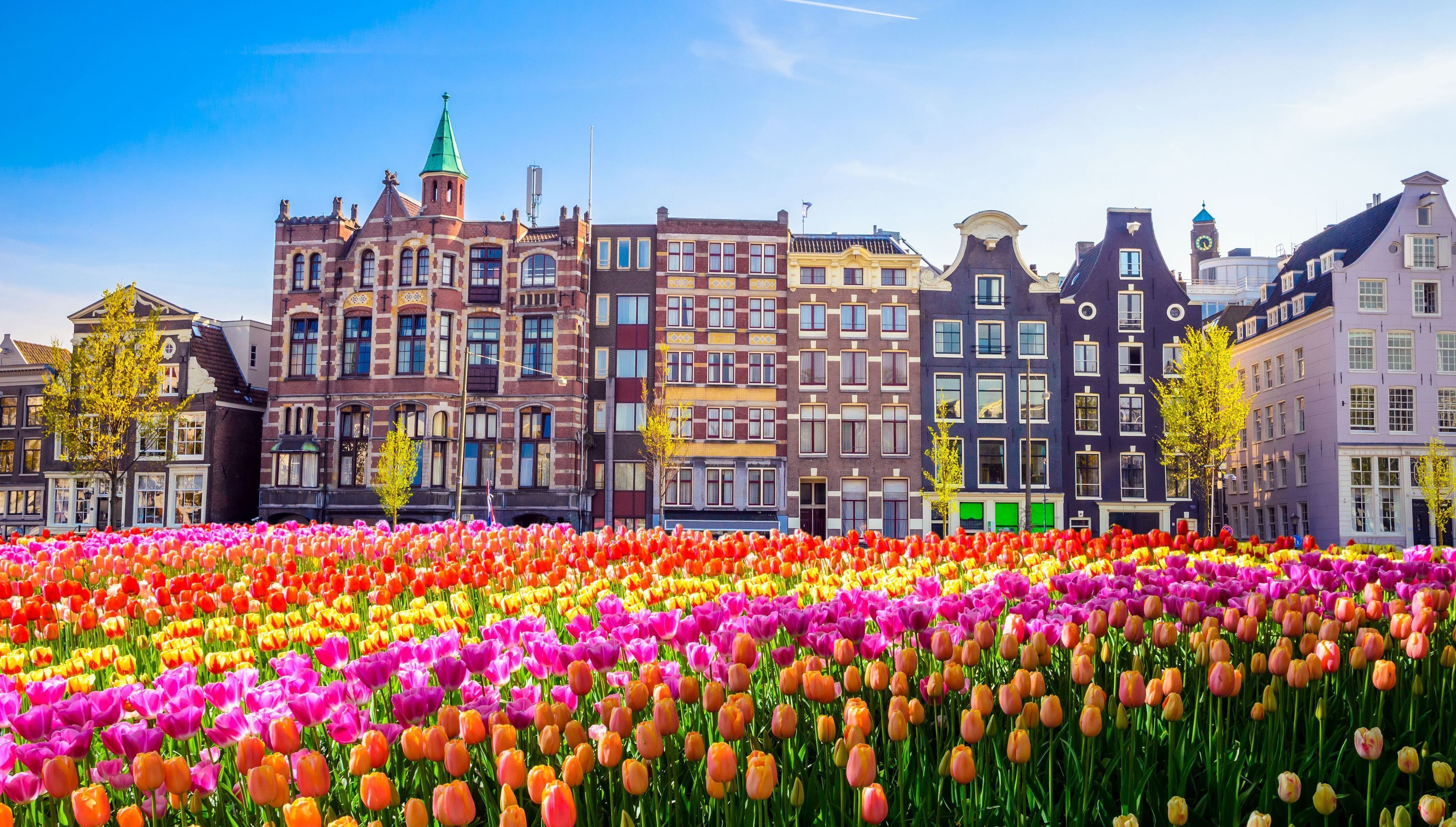
Die Niederlande (im Deutschen Plural; niederländisch Nederland und friesisch Nederlân, Singular) sind eines der vier autonomen Länder des Königreiches der Niederlande. Das überwiegend im nördlichen Westeuropa liegende Land wird dort durch die Nordsee im Norden und Westen, Belgien im Süden und Deutschland im Osten begrenzt. Die Hauptstadt der Niederlande ist Amsterdam, der Regierungssitz ist Den Haag.
Zu dem Gebiet der Niederlande, das in diesem Artikel dargestellt wird, gehören neben den zwölf Provinzen des europäischen Teils die Karibikinseln Bonaire, Sint Eustatius und Saba (einschließlich ihrer jeweiligen Nebeninseln), die Besondere Gemeinden des Landes sind. Diese Konstruktion besteht seit der Auflösung des Landes Niederländische Antillen im Jahre 2010. Weitere niederländische karibische Gebiete sind kein Teil des Landes Niederlande, sondern autonome Länder im Königreich der Niederlande. Dies sind die Länder Aruba, Curaçao und Sint Maarten.
Nach Zugehörigkeit zum Ostfrankenreich und zum Heiligen Römischen Reich gilt das Jahr 1581 als Geburtsstunde der Vereinigten Niederlande, die mit dem Westfälischen Frieden endgültig anerkannt wurde. Die Niederlande wurden zu einer Handels-, Kolonial- und Militär-Großmacht. Das 17. Jahrhundert wird als Goldenes Zeitalter beschrieben. Die Verfassung der Niederlande geht auf die Zeit des Wiener Kongresses 1814/15 zurück.
Zusammen mit Belgien und Luxemburg bilden die Niederlande die Benelux-Union. Die Niederlande sind Gründungsmitglied der Montanunion von 1951, aus der sich mehrere Nachfolger und 1992 die Europäische Union (EU) entwickelten.
Das Königreich der Niederlande, niederländisch Koninkrijk der Nederlanden, französisch Royaume des Pays-Bas, englisch Kingdom of the Netherlands, friesisch Keninkryk fan de Nederlannen, auf Papiamento Reino Hulandes, ist ein Staat in Europa und in der Karibik. Der Staat ist in vier Staatsteile gegliedert, die „Länder“ (niederländisch landen) genannt werden. Ein solches Land ist autonom und hat eine eigene Regierung und Währung. Gemeinsame Aufgaben des Königreichs bestehen vor allem in der Außen- und Sicherheitspolitik sowie in Angelegenheiten der Staatsangehörigkeit.
Die vier Länder sind:
- das europäische Land, das als Niederlande bekannt ist. Zu diesem Land gehören allerdings seit dem Jahr 2010 auch drei karibische Inseln als "besondere Gemeinden", die man Karibische Niederlande oder BES-eilanden (BES-Inseln) nennt: Bonaire, St. Eustatius und Saba.
- drei Länder in der Karibik: Aruba, Curaçao und Sint Maarten.
Das Königreich in diesem Sinne ist aus dem Kolonialreich der Niederlande entstanden. Nach der Unabhängigkeit Indonesiens 1949 waren dies noch Suriname in Südamerika sowie die karibischen Inseln, die damals als Niederländische Antillen zusammengefasst waren. Suriname wurde 1975 unabhängig, während die Niederländischen Antillen im Jahr 2010 aufgelöst wurden (Aruba wurde schon 1985 ein eigenständiges Land).
Die rechtliche Grundlage für das Königreich sind die Verfassung der Niederlande sowie seit 1954 das Statuut voor het Koninkrijk der Nederlanden. Letzteres regelt die Beziehungen zwischen den vier Ländern und die gemeinsame Beschlussfassung. Die drei Länder in der Karibik haben außerdem ihre eigenen Verfassungen, die in allen drei Ländern Staatsregeling heißen.
Das Königreich hat als gemeinsames Organ den Rijksministerraad. Dabei handelt es sich um das niederländische Kabinett, das um Vertreter aus den anderen drei Ländern erweitert wird. Gemeinsame Gesetze werden vom niederländischen Parlament nach Anhörung karibischer Vertreter beschlossen. Staatsoberhaupt des Königreichs und jedes einzelnen Landes ist der König der Niederlande.
在17世纪,荷兰是当时世界上最强大的海上霸主,曾被誉为海上马车夫。荷兰本土设12个省,下设443个市镇。首都设在阿姆斯特丹,但是其中央政府、国王居住办公地、所有的政府机关与外国使馆、最高法院和许多组织都在海牙。
荷兰王国(荷兰语:het Koninkrijk der Nederlanden;帕皮阿门托语:Reino Hulandes;英语:The Kingdom of the Netherlands),简称荷兰(Netherlands)[a],位于欧洲西北部的低地国家,是一个世袭君主立宪王国,由荷兰、阿鲁巴岛、库拉索岛和荷属圣马丁岛四个国家构成。荷兰是欧盟和北约成员国,面积约4.15万平方公里,人口1726万人(2018年),首都阿姆斯特丹市。
各个构成国在一些问题上独立执行,在其他方面合作执行。荷兰王国政府的权力仅限于国防、外交、国籍和引渡,除了上述权力以外,各构成国皆有完全的自主权和自治权。


Montenegro (serbokroatisch Црна Гора/Crna Gora [’t͡sr̩naː ’ɡɔra]; albanisch Mali i Zi) ist eine Republik an der südöstlichen Adriaküste in Südosteuropa. Das montenegrinische Staatsgebiet grenzt im Nordwesten an Kroatien (25 km), Bosnien und Herzegowina (225 km) und im Nordosten an Serbien (124,4 km), im Südosten an den Kosovo (78,6 km) und im Süden an Albanien (172 km).[5] Nachdem Montenegro nahezu 90 Jahre zu Jugoslawien gehört hatte, wurde es am 3. Juni 2006 erneut unabhängig.
Der Balkanstaat ist mit etwa 625.000 Einwohnern und einer Fläche von 13.812 Quadratkilometern einer der kleineren Staaten Europas – flächenmäßig etwas kleiner als Schleswig-Holstein. Die Hauptstadt und größte Stadt ist Podgorica, zweitgrößte Stadt ist Nikšić. Hauptwirtschaftszweige sind der Dienstleistungssektor und der Tourismus, vor allem an der montenegrinischen Küste.
Montenegro ist Mitglied der Vereinten Nationen, der WTO, der OSZE und des Europarates. Zudem ist Montenegro Beitrittskandidat der Europäischen Union, nutzt den Euro als Währung und ist ab dem 5. Juni 2017 das 29. und jüngste Mitglied der NATO.
黑山(黑山语:Црна Гора,转写:Crna Gora,直译:黑色的山),是位于巴尔干半岛西南部、亚得里亚海东岸上的一个多山国家。过去多采用其英文名称“Montenegro”的音译,如“门的内哥罗”,中国大陆、新马、澳门则意译作“黑山”;香港译作“蒙特尼哥罗”,台湾则译作“蒙特内哥罗”。
黑山的东北为塞尔维亚,东为科索沃(2008年2月17日单方面宣布独立),东南为阿尔巴尼亚,西北为波斯尼亚和黑塞哥维那以及克罗地亚,西南则为亚得里亚海(为地中海的其中一个部分)。
黑山原为1910年建立的黑山王国,一战后加入新成立的塞尔维亚人、克罗地亚人和斯洛文尼亚人王国,二战时期轴心国入侵南斯拉夫,黑山成为意大利的保护国,后纳粹德国占领、盟军解放。二战后成为南斯拉夫社会主义联邦共和国的六个加盟共和国之一,南斯拉夫的四个加盟国(斯洛文尼亚、克罗地亚、波斯尼亚和黑塞哥维那、马其顿)在1990年代初独立后,黑山和塞尔维亚成为了南斯拉夫仅存的两个加盟共和国。2003年,南斯拉夫联盟共和国决定放弃“南斯拉夫”的国名,改称塞尔维亚和黑山。2006年5月21日,黑山举行公民投票,独立派以55.5%的得票比例在投票中险胜;同年6月3日,黑山国会正式宣布独立,同时成为联合国会员国。2017年6月5日,黑山加入北约,成为该组织第29个会员国。

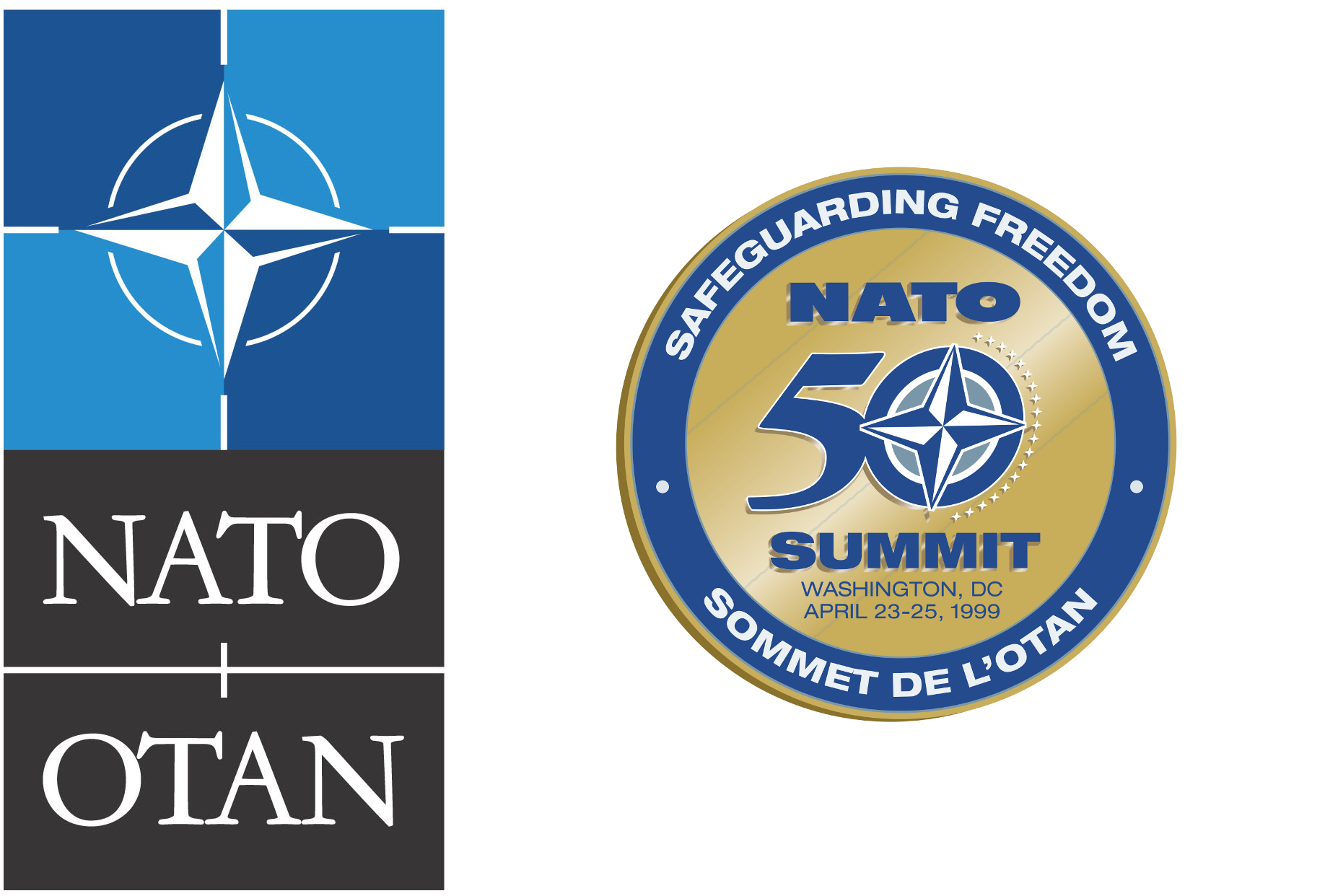

 Alexander De Croo
Alexander De Croo
 Alexander Stubb
Alexander Stubb
 Andrzej Duda
Andrzej Duda
 Anthony Albanese
Anthony Albanese
 Bjarni Benediktsson
Bjarni Benediktsson
 Christopher Luxon
Christopher Luxon
 Dick Schoof
Dick Schoof
 Dimitar Glavchev
Dimitar Glavchev
 Edi Rama
Edi Rama
 Emmanuel Macron
Emmanuel Macron
 Evika Siliņa
Evika Siliņa
 Fumio Kishida
Fumio Kishida
 Giorgia Meloni
Giorgia Meloni
 Gitanas Nausėda
Gitanas Nausėda
 Hristijan Mickoski
Hristijan Mickoski
 Jakov Milatović
Jakov Milatović
 Jens Stoltenberg
Jens Stoltenberg
 Joe Biden
Joe Biden
 Jonas Gahr Støre
Jonas Gahr Støre
 Justin Trudeau
Justin Trudeau
 Kaja Kallas
Kaja Kallas
 Keir Starmer
Keir Starmer
 Klaus Johannis
Klaus Johannis
 Kyriakos Mitsotakis
Kyriakos Mitsotakis
 Luc Frieden
Luc Frieden
 Luís Montenegro
Luís Montenegro
 Mette Frederiksen
Mette Frederiksen

 Mitglieder der NATO
Mitglieder der NATO

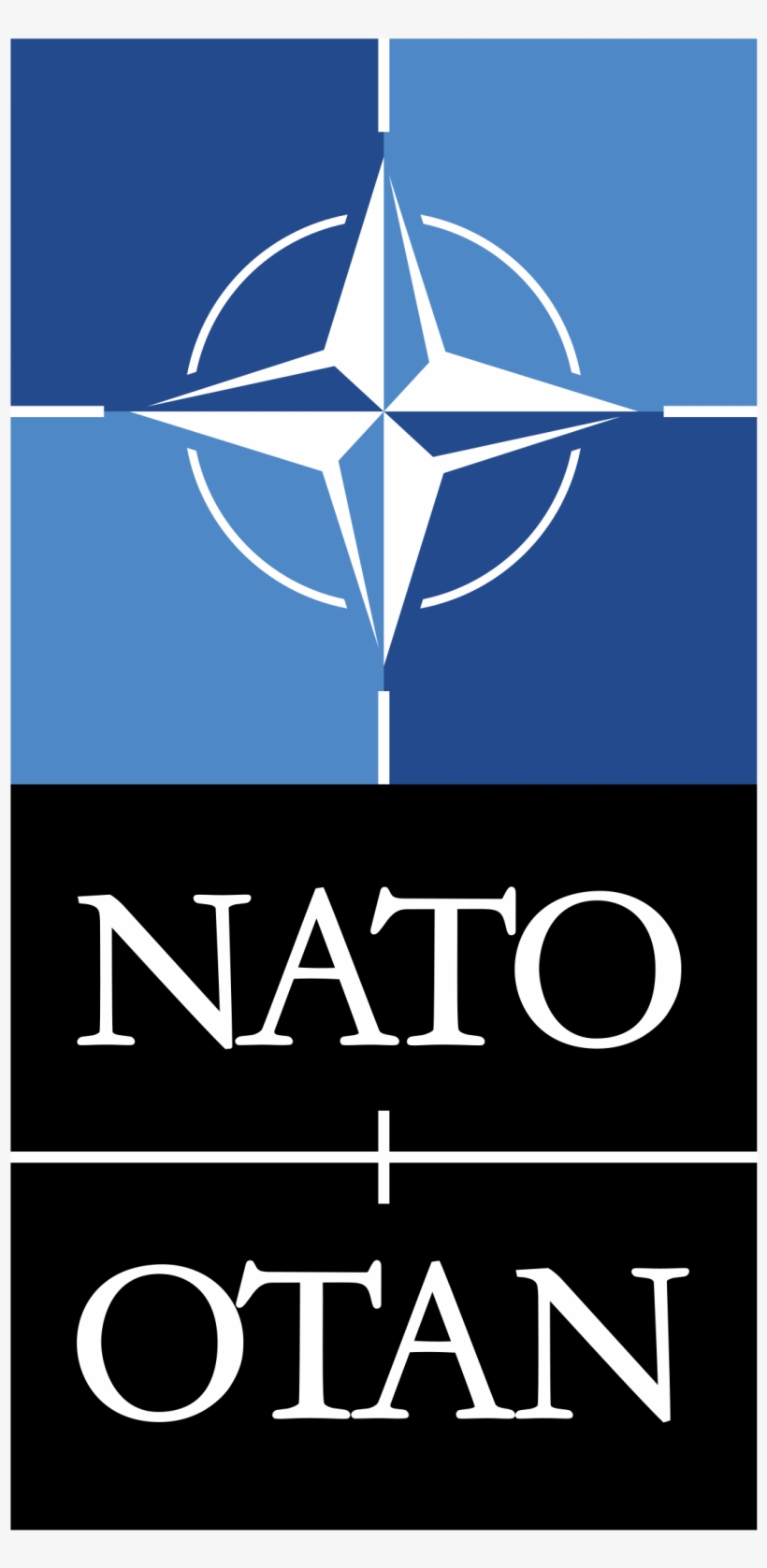 NATO summit
NATO summit
 Olaf Scholz
Olaf Scholz
 Pedro Sánchez
Pedro Sánchez
 Peter Pellegrini
Peter Pellegrini
 Petr Pavel
Petr Pavel
 Recep Tayyip Erdoğan
Recep Tayyip Erdoğan
 Robert Golob
Robert Golob
 Ulf Kristersson
Ulf Kristersson
 United States
United States
 Viktor Orbán
Viktor Orbán

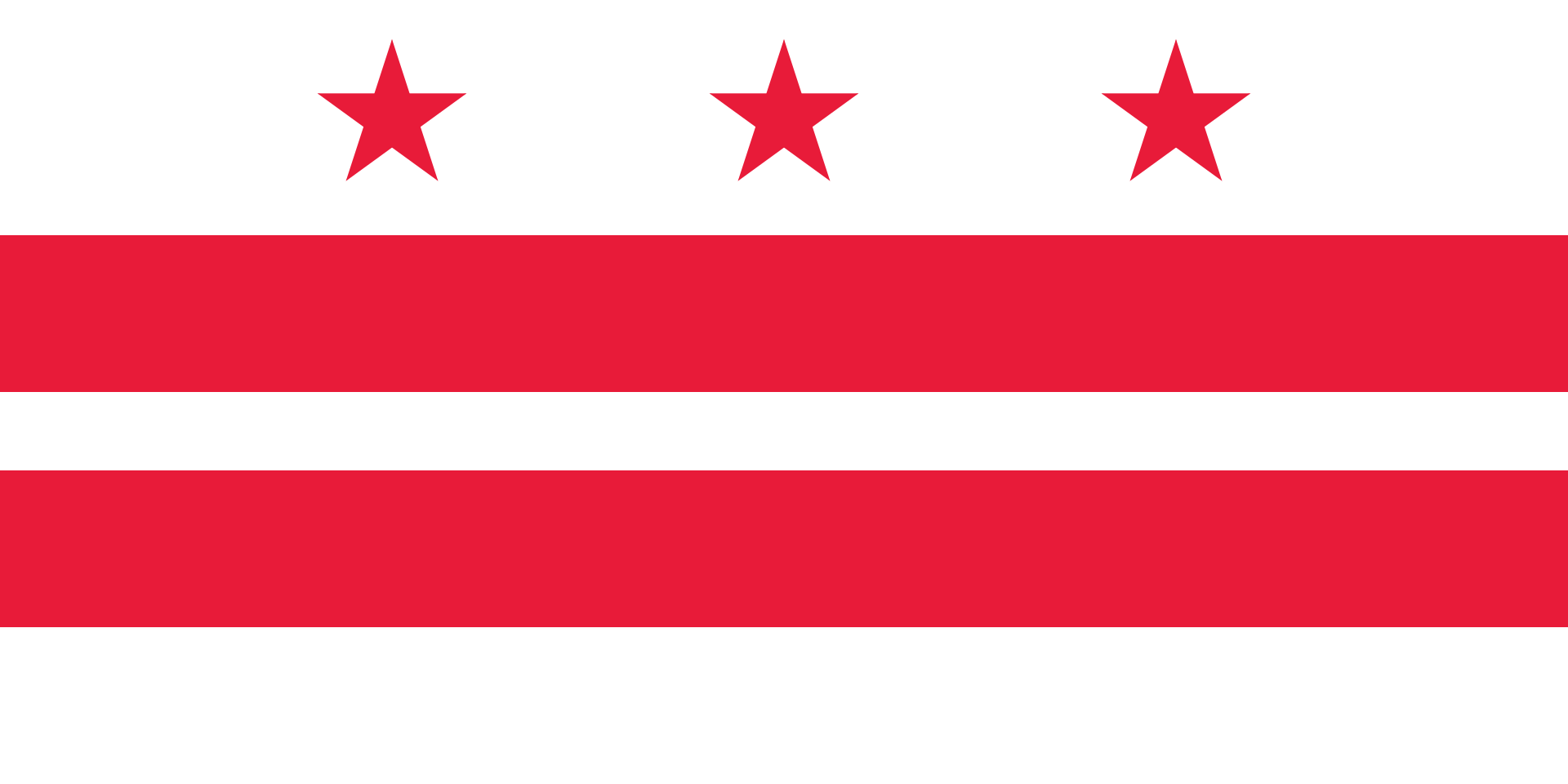 Washington, D.C.
Washington, D.C.
 Wolodymyr Selenskyj
Wolodymyr Selenskyj
 Yoon Suk-yeol
Yoon Suk-yeol
 Zoran Milanović
Zoran Milanović


Der NATO-Gipfel 2024 in Washington wird vom 9. bis 11. Juli 2024 in der Hauptstadt der USA stattfinden.
Die Staats- und Regierungschefs der 32 Mitglieder der NATO, ihrer Partnerländer und der Europäischen Union (EU) feiern den 75. ‚Geburtstag‘ der NATO (der Nordatlantikvertrag wurde am 4. April 1949 in Washington, D.C. unterzeichnet). Der Gipfel ist der vierte NATO-Gipfel in den Vereinigten Staaten (nach Gipfeln in Chicago (2012) und in Washington (1978 und 1999)).
 *Track and field athletics
*Track and field athletics
 4x100 m Men
4x100 m Men
 Commonwealth of Nations
Commonwealth of Nations

 Geography
Geography

 Geography
Geography
 ***IMF Developed countries
***IMF Developed countries
 IMF Developed countries
IMF Developed countries
 IMF Developed countries
IMF Developed countries
 TOP3
TOP3
 Canada
Canada
 Leichtathletik-Weltmeisterschaften
Leichtathletik-Weltmeisterschaften
 1997 Athens
1997 Athens
 Leichtathletik-Weltmeisterschaften
Leichtathletik-Weltmeisterschaften
 1995 Gothenburg
1995 Gothenburg

 Mitglieder der NATO
Mitglieder der NATO

 Party and government
Party and government
 Group of the twenty most important industrial and emerging countries
Group of the twenty most important industrial and emerging countries

 Party and government
Party and government
 Group of Seven,G7
Group of Seven,G7


Kanada (englisch und französisch Canada) ist ein Staat in Nordamerika, der zwischen dem Atlantik im Osten und dem Pazifik im Westen liegt und nordwärts bis zum Arktischen Ozean reicht. Bundeshauptstadt ist Ottawa, die bevölkerungsreichste Stadt ist Toronto. Die einzige Landgrenze ist jene zu den USA im Süden und im Nordwesten. Kanada ist nach Russland der zweitgrößte Staat der Erde, hat aber mit knapp 38 Millionen Einwohnern nur eine Bevölkerungsdichte von 3,6 Personen pro km².
Die Besiedlung durch die First Nations begann spätestens vor 12.000 Jahren, die Inuit folgten vor rund 5000 Jahren. Ab dem späten 15. Jahrhundert landeten Europäer an der Ostküste und begannen um 1600 mit der Kolonisierung. Dabei setzten sich zunächst Franzosen und Engländer fest. In dieser Zeit breitete sich die Bezeichnung „Canada“ aus, das ursprünglich ein Name für ein Irokesendorf war. Frankreich trat 1763 seine Kolonie Neufrankreich an Großbritannien ab. Im Jahre 1867 gründeten drei britische Kolonien die Kanadische Konföderation. Mit dem Statut von Westminster erhielt das Land 1931 gesetzgeberische Unabhängigkeit, weitere verfassungsrechtliche Bindungen zum Vereinigten Königreich wurden 1982 aufgehoben. Nominelles Staatsoberhaupt ist Königin Elisabeth II., die durch den Generalgouverneur von Kanada vertreten wird.
Kanada ist ein auf dem Westminster-System basierender parlamentarisch-demokratischer Bundesstaat und eine parlamentarische Monarchie. Amtssprachen sind Englisch und Französisch. Die Unabhängigkeitsbestrebungen Québecs, die Stellung der frankophonen Kanadier und die Rechte der indigenen Völker (neben den First Nations und Inuit die Métis) sind wichtige Konfliktlinien in Staat und Gesellschaft. Die Themen Klimawandel und Umweltschutz, Einwanderungspolitik und Rohstoffabhängigkeit sowie das Verhältnis zum südlichen Nachbarn USA, von dem kulturell und historisch bedingt ein ambivalentes Bild besteht, kennzeichnen die öffentlichen Debatten.
加拿大(英语、法语:Canada,IPA读音:/ˈkænədə/(英)/kanada/(法))为北美洲国家,西抵太平洋,东至大西洋,北滨北冰洋,东北方与丹麦领地格陵兰相望,东部与圣皮埃尔和密克隆相望,南方及西北方与美国接壤。加拿大的领土面积达998万4670平方千米,为全球面积第二大国家。加拿大素有“枫叶之国”的美誉,渥太华为该国首都。加拿大被《福布斯》列于2020年退休宜居国的名单中[8]。
加拿大在1400年前即有原住民在此生活。15世纪末,英国和法国殖民者开始探索北美洲的东岸,并在此建立殖民地。1763年,当七年战争结束后,法国被迫将其几乎所有的北美殖民地割让予英国。在随后的几十年中,英国殖民者向西探索至太平洋地区,并建立了数个新的殖民地。1867年7月1日,1867年宪法法案通过,加拿大省分裂为安大略和魁北克两省,与新不伦瑞克、新斯科舍三个英属北美殖民地组成加拿大联邦。在随后100多年里,其它几块英属北美殖民地陆续加入联邦,组成现代加拿大。1931年12月11日,英国通过威斯敏斯特法令,令加拿大成为独立国家,但国家元首依旧是当时的英国国王乔治五世,且英国国会依旧掌握有加拿大的修宪权。1933年和1949年,加拿大民事案件和刑事案件的终审权分别从英国枢密院司法委员会移交至加拿大最高法院。1982年4月17日,英国女王兼加拿大女王伊丽莎白二世签署命令,将加拿大宪法修宪权移交加拿大国会,至此加拿大与英国的特殊关系终结。
加拿大是实行联邦制、君主立宪制及议会制的国家,由十个省和三个地区组成,女王伊丽莎白二世为国家元首及加拿大君主,而加拿大总督为其及政府的代表。加拿大是双语国家,英语和法语为官方语言,原住民的语言被认定为第一语言。由于地处高纬度及地广人稀,该国一直奉行积极吸纳外来移民的政策,以至人口亦以移民为主,有近五分之一的国民于国外出生,是世界上拥有种族及文化最为多元的国家之一。近年来移民大部分来自亚洲。[9]
得益于丰富的天然资源和高度发达的科技,加拿大是富裕、经济发达的国家。以国际汇率计算,加拿大的人均国内生产总值在全世界排名第十六,人类发展指数排名第十。它在教育、政府的透明度、自由度、生活品质及经济自由的国际排名都名列前茅。积极参与国际事务,是联合国、北大西洋公约组织、北美空防司令部、七大工业国组织、二十国集团、亚太经济合作组织、经济合作与发展组织、英联邦和法语圈的成员国及太平洋岛国论坛的对话伙伴。
カナダ(英・仏: Canada、英語発音: /ˈkænədə/ ![]() 聞く キャナダ[2]、フランス語発音: /kanada/ カナダ[3])は、北アメリカ大陸北部に位置し、10の州と3の準州からなる連邦立憲君主制国家。首都はオタワ(オンタリオ州)。
聞く キャナダ[2]、フランス語発音: /kanada/ カナダ[3])は、北アメリカ大陸北部に位置し、10の州と3の準州からなる連邦立憲君主制国家。首都はオタワ(オンタリオ州)。
イギリス連邦加盟国であり、英連邦王国のひとつ。アメリカ合衆国と国境を接する。国土面積は世界最大のロシアに次いで広い。
歴史的に先住民族が居住する中、外からやってきた英仏両国の植民地連合体として始まった。1763年からイギリス帝国に包括された。1867年の連邦化をきっかけに独立が進み、1931年ウエストミンスター憲章で承認され、1982年憲法制定をもって政体が安定した[4]。一連の過程においてアメリカと政治・経済両面での関係が深まった。連邦制をとり、連邦政府の運営は首相を中心に行われている。
Canada is a country in the northern part of North America. Its ten provinces and three territories extend from the Atlantic to the Pacific and northward into the Arctic Ocean, covering 9.98 million square kilometres (3.85 million square miles), making it the world's second-largest country by total area. Its southern border with the United States, stretching 8,891 kilometres (5,525 mi), is the world's longest bi-national land border. Canada's capital is Ottawa, and its three largest metropolitan areas are Toronto, Montreal, and Vancouver.
Various indigenous peoples inhabited what is now Canada for thousands of years before European colonization. Beginning in the 16th century, British and French expeditions explored and later settled along the Atlantic coast. As a consequence of various armed conflicts, France ceded nearly all of its colonies in North America in 1763. In 1867, with the union of three British North American colonies through Confederation, Canada was formed as a federal dominion of four provinces. This began an accretion of provinces and territories and a process of increasing autonomy from the United Kingdom. This widening autonomy was highlighted by the Statute of Westminster of 1931 and culminated in the Canada Act of 1982, which severed the vestiges of legal dependence on the British parliament.
Canada is a parliamentary democracy and a constitutional monarchy in the Westminster tradition, with a monarch and a prime minister who serves as the chair of the Cabinet and head of government. The country is a realm within the Commonwealth of Nations, a member of the Francophonie and officially bilingual at the federal level. It ranks among the highest in international measurements of government transparency, civil liberties, quality of life, economic freedom, and education. It is one of the world's most ethnically diverse and multicultural nations, the product of large-scale immigration from many other countries. Canada's long and complex relationship with the United States has had a significant impact on its economy and culture.
A developed country, Canada has the seventeenth-highest nominal per-capita income globally as well as the thirteenth-highest ranking in the Human Development Index. Its advanced economy is the tenth-largest in the world, relying chiefly upon its abundant natural resources and well-developed international trade networks. Canada is part of several major international and intergovernmental institutions or groupings including the United Nations, NATO, the G7, the Group of Ten, the G20, the North American Free Trade Agreement and the Asia-Pacific Economic Cooperation forum.
Le Canada (prononcé [kanadɔ]4 Écouter ou [kanada]5 Écouter ; en anglais [ˈkænədə]6 Écouter) est un pays situé dans la partie septentrionale de l'Amérique du Nord. Monarchie constitutionnelle à régime parlementaire constituée en fédération, composée de dix provinces et trois territoires, le pays est encadré par l'océan Atlantique à l'est-nord-est et à l'est, par l'océan Arctique au nord-nord-ouest et au nord-est, enfin par l'océan Pacifique à l'ouest. Le Canada comprend deux frontières terrestres avec les États-Unis, l'une au sud et l'autre à l'ouest-nord-ouest avec l'Alaska ainsi qu'une frontière maritime avec la France, par le biais de l'archipel de Saint-Pierre-et-Miquelon, et le Danemark, par le biais du Groenland. Le territoire terrestre canadien s'étend sur 10 millions de kilomètres carrés, ce qui en fait le deuxième pays du monde pour la superficie après la Russie7. En 2019, il compte plus de 37 millions d'habitants1 et est ainsi le 37e pays du monde en ce qui concerne la population. Le territoire contient plus de 31 700 lacs8, ce qui fait du Canada le pays possédant parmi les plus grandes réserves d'eau douce du globe9,10. Les langues officielles au niveau fédéral sont l'anglais et le français. La capitale fédérale est Ottawa et la monnaie le dollar canadien11.
Les premiers occupants du territoire canadien ont été les Amérindiens, dont les migrations remontent à environ 15 000 ans12 lors de la dernière glaciation qui a abaissé le niveau des océans et créé un pont terrestre reliant l'Eurasie à l'Amérique, permettant à ceux-ci de s'installer13.
Si des Vikings s'installent dès le XIe jusqu'au XIVe siècle, les premières explorations des Européens débutent à la fin du XVe siècle, culminant avec les expéditions du Français Jacques Cartier dans le golfe du Saint-Laurent. Après quelques expériences infructueuses dans la première moitié du XVIe siècle, le 5 août 1583, la colonie anglaise de Terre-Neuve est fondée, suivie des premiers comptoirs pérennes français sur le continent entre 1600 et 1608, amorçant le processus de la colonisation européenne. Par la suite, d'autres colonies britanniques et françaises sont établies, notamment dans la région de la côte Atlantique (Nouvelle-Écosse, Acadie), dans la vallée du fleuve Saint-Laurent et la péninsule du Labrador (Nouvelle-France) ainsi que dans la zone arctique, tandis que d'autres puissances européennes telles l'Espagne et la Russie explorent le reste du territoire canadien. À la suite de divers conflits dont surtout la guerre de Succession d'Espagne (1701-1714), la guerre de la Conquête (1754-1760) et la guerre d'indépendance des États-Unis (1775-1783), la Grande-Bretagne gagne et perd des territoires au XVIIIe siècle, aboutissant à ce qui correspond au territoire canadien d'aujourd'hui. Trois de ces colonies se fédèrent le 1er juillet 1867 et forment le dominion du Canada, nation indépendante sous domination partielle de la Couronne britannique. Sa souveraineté totale est ensuite garantie par la déclaration Balfour de 1926, le Statut de Westminster de 1931 et le rapatriement de sa Constitution en 1982.
L'histoire contemporaine du Canada a été marquée par une vigoureuse expansion territoriale, la ruée vers l'or et la participation à la Première Guerre mondiale. Le pays fut durement touché par la Grande Dépression en 1929 mais son économie rebondit grâce à sa participation à la Seconde Guerre mondiale, où il émergea comme puissance moyenne et fut l'un des vainqueurs en tant que membre des Alliés14.
En 2015, le Canada possède le dixième revenu par habitant le plus élevé15, et est classé neuvième par le PNUD en termes d'indice de développement humain16. Il s'agit de la dixième puissance économique mondiale par son PIB en 2017, les principaux secteurs de son économie étant les services, les télécommunications, l'agriculture, l'énergie, l'aéronautique et la construction automobile. Il entretient de forts liens avec les États-Unis (pays anglo-saxon le plus proche et partageant une partie de son histoire), qui sont son principal client et fournisseur avec lequel perdure une des relations les plus intimes et les plus approfondies au monde entre deux nations. Le pays est un des meneurs en matière de recherche scientifique17, et se range parmi les plus éduqués du monde en étant classé premier par le nombre d'adultes possédant une éducation post-secondaire, avec 51 % d'entre eux ayant au moins atteint un diplôme post-secondaire chez sa population âgée de 25 à 64 ans18. Le Canada est membre du G7, du G20, de l'Accord de libre-échange nord-américain (ALENA), de l'Organisation du traité de l'Atlantique nord (OTAN), de la Coopération économique pour l'Asie-Pacifique (APEC), de l'Organisation des États américains (OEA), de l'Organisation de coopération et de développement économiques (OCDE), de l'Organisation des Nations unies (ONU), du Commonwealth et de l'Organisation internationale de la francophonie.
Il Canada (AFI: /ˈkanada/)[5] o Canadà (AFI: /kanaˈda/)[6] è uno Stato indipendente dell'America Settentrionale[7] bagnato dall'Atlantico a est, dal Mar Glaciale Artico a nord e dall'Oceano Pacifico a ovest. Con una superficie di 9897170 km² è il secondo paese del mondo per superficie totale dopo la Russia. Confina solo con il territorio degli Stati Uniti d'America: quelli continentali a sud, in buona parte lungo la linea del 49º parallelo Nord, e con lo Stato dell'Alaska a nord-ovest quasi interamente lungo il 141º meridiano Ovest:[7] si tratta del confine terrestre tra due Stati più lungo del mondo (8893 km).
Abitato, prima dell'arrivo europeo sul continente, da popolazioni aborigene, il territorio dell'attuale Canada fu colonizzato da Francia e Regno Unito a inizio XVII secolo[7] a partire dalla costa atlantica. I francesi persero in seguito i loro territori progressivamente a favore del Regno Unito: dapprima (1713) con il trattato di Utrecht alla fine della guerra di successione spagnola, con cui Terranova e la baia di Hudson furono cedute da Luigi XIV; a seguire nel 1763 dopo la sconfitta nella guerra franco-indiana, teatro nordamericano della guerra dei sette anni e, infine, con la vendita di Napoleone (1803) della Louisiana francese agli Stati Uniti d'America e delle sue ultime rimanenze oltre il confine canadese al Regno Unito. Il 1º luglio 1867 nacque la federazione canadese con l'unione delle tre colonie del Nord America Britannico di Nuova Scozia, Nuovo Brunswick e Canada,[8] che in seguito divennero quattro per la scissione della provincia del Canada in Ontario e Québec. Nel corso del tempo si aggiunsero sempre più province che avrebbero poi formato l'odierno stato nordamericano. Costituitosi in Stato unitario il 1º luglio 1867 come Confederazione canadese per iniziativa della Corona britannica, divenne formalmente indipendente l'11 dicembre 1931, data di promulgazione dello statuto di Westminster con cui il Regno Unito affrancò molti dei suoi ex dominion. Infine, con la nuova legge sul Canada del 1982 (il cosiddetto patriation o "rimpatrio") il Regno Unito abdicò anche al potere formale di modifica della costituzione canadese garantitogli dallo Statuto del 1931.
Il Canada è uno Stato membro del Commonwealth britannico del quale è uno dei sedici reami: di conseguenza, benché indipendente,[7] ha come capo di Stato il sovrano del Regno Unito, al 2020 la regina Elisabetta II che, nelle questioni di Stato riguardanti il Canada, agisce con il titolo di Elisabetta II Regina del Canada. In rappresentanza del sovrano agisce localmente il governatore generale del Canada, il quale è capo di Stato de facto, avendo le prerogative di accreditare il corpo diplomatico, assegnare l'incarico di primo ministro e nominare i giudici della Corte suprema, convocare le elezioni generali federali e in talune occasioni rappresentare il Paese a livello internazionale. Dal 1959 esiste la prassi non ufficiale di nominare alternativamente un governatore generale anglofono e uno francofono per rispetto dei due maggiori gruppi linguistici del Paese.
Il sistema politico è

 Geography
Geography
 ***IMF Developed countries
***IMF Developed countries

 Geography
Geography
 IMF Developed countries
IMF Developed countries
 IMF Developed countries
IMF Developed countries
 TOP5
TOP5

 Mitglieder der NATO
Mitglieder der NATO

 States of Europe
States of Europe
 Czech Republic
Czech Republic
Tschechien (tschechisch Česko, amtlich Tschechische Republik, veraltet auch Tschechei, tschechisch Česká republika ) ist ein Binnenstaat in Mitteleuropa mit rund 10,5 Millionen Einwohnern. Es setzt sich aus den historischen Ländern Böhmen (Čechy) und Mähren (Morava) sowie Teilen von Schlesien (Slezsko) zusammen. Das Land grenzt im Westen an Deutschland, im Norden an Polen, im Osten an die Slowakei und im Süden an Österreich. Hauptstadt und Millionenmetropole des Landes ist Prag (tschechisch Praha), weitere Großstädte sind Brünn (Brno), Ostrau (Ostrava), Pilsen (Plzeň), Reichenberg (Liberec) und Olmütz (Olomouc).
Im 6. Jahrhundert wanderten Slawen in das zuvor von Kelten und Germanen besiedelte Böhmen ein. Anfang des 9. Jahrhunderts bildete sich das Mährerreich als erstes slawisches Staatswesen heraus. Der geeinte tschechische Staat entstand unter der böhmischen Přemysliden-Dynastie, als im 11. Jahrhundert die Markgrafschaft Mähren Böhmen unterstellt und 1085 das Königreich Böhmen geformt wurde. Es hatte eine Sonderstellung im Heiligen Römischen Reich und beherrschte unter den Přemysliden und Luxemburgern große Gebiete Kontinentaleuropas. Im Zuge des Aufstiegs der Habsburger und des Dreißigjährigen Krieges wurde das Gebiet Teil der Habsburgermonarchie und blieb es bis zu deren Zerfall nach der Niederlage im Ersten Weltkrieg.
Im Jahre 1918 erfolgte die Gründung der demokratischen Tschechoslowakei. Im Jahre 1939 wurde der tschechische Landesteil durch das nationalsozialistische Deutschland besetzt und zum Protektorat Böhmen und Mähren erklärt. Im Jahre 1945 befreiten die Alliierten mit Unterstützung der Tschechoslowakischen Exilarmee das Land vom NS-Regime. Nach dem Krieg wurde die deutsche Minderheit vertrieben. Nachdem die Rote Armee den Großteil der Tschechoslowakei besetzt hatte, übernahm 1948 die Kommunistische Partei der Tschechoslowakei (KSČ) im sogenannten Februarumsturz die Macht im Land, das somit zum Satellitenstaat der Sowjetunion wurde. Die Reformbewegung des Prager Frühlings schlugen im Jahr 1968 Truppen des Warschauer Paktes nieder. Nach der Samtenen Revolution 1989 wurde unter Präsident Václav Havel die Demokratie wiedererrichtet. Die heutige Tschechische Republik entstand am 1. Januar 1993 mit der friedlichen Teilung der Tschechoslowakei. Sie ist seit 1999 Mitglied der NATO und seit 2004 Mitglied der Europäischen Union.
捷克共和国(捷克语:Česká republika),通称捷克(Česko),是一个位在于中欧的内陆国家。南面是奥地利,西面是德国,东北面是波兰,东面为斯洛伐克[7]。
捷克国家起源于波希米亚王国,是神圣罗马帝国的首都和三十年宗教战争的策源地,后成为奥地利帝国和奥匈帝国的工业中心。20世纪初,因一战结束而从奥匈帝国独立,和斯洛伐克合并为捷克斯洛伐克,名列世界七大工业国之一,二战时被纳粹德国吸收为保护国。冷战时代被苏联拉入东方集团,成为苏共的卫星国;1989年透过天鹅绒革命脱离共产体制转向民主,1993年经历天鹅绒分离与斯洛伐克以和平的方式分裂为独立国家,但两国关系依旧友好如初。捷克和德国、奥地利一样,在机械制造业、啤酒产业、观光旅游业领域都非常发达,也是所有斯拉夫民族的国家中教育程度最高及民主体制最稳定的国家,其福利政策在中欧国家中名列前茅。
チェコ共和国(チェコきょうわこく、チェコ語: Česká republika、英: Czech Republic)、通称チェコは、中央ヨーロッパ[注釈 1]の共和制国家。首都はプラハである。国土は東西に細長い六角形に近い形をしており、北はポーランド、東はスロバキア、南はオーストリア、西はドイツと国境を接する。
1993年にチェコスロバキアがチェコとスロバキアに分離し成立した。NATO、EU、OECDの加盟国で、中欧4か国からなるヴィシェグラード・グループの一員でもある。
The Czech Republic,[a][11] also known by its short-form name Czechia[b][12] and formerly known as Bohemia,[13] is a landlocked country in Central Europe. It is bordered by Austria to the south, Germany to the west, Poland to the northeast, and Slovakia to the east.[14] The Czech Republic has a hilly landscape that covers an area of 78,871 square kilometers (30,452 sq mi) with a mostly temperate continental and oceanic climate.
The Duchy of Bohemia was founded in the late 9th century under Great Moravia. It was formally recognized as an Imperial State of the Holy Roman Empire in 1002 and became a kingdom in 1198.[15][16] Following the Battle of Mohács in 1526, the whole Crown of Bohemia was gradually integrated into the Habsburg Monarchy. The Protestant Bohemian Revolt led to the Thirty Years' War. After the Battle of the White Mountain, the Habsburgs consolidated their rule. With the dissolution of the Holy Empire in 1806, the Crown lands became part of the Austrian Empire.
In the 19th century, the Czech lands became more industrialized, and in 1918 most of it became part of the First Czechoslovak Republic following the collapse of Austria-Hungary after World War I.[17] Czechoslovakia was the only country in Central and Eastern Europe to remain a parliamentary democracy during the entirety of the interwar period.[18] After the Munich Agreement in 1938, Nazi Germany systematically took control over the Czech lands. Czechoslovakia was restored in 1945 and became an Eastern Bloc communist state following a coup d'état in 1948. Attempts at a liberalisation of the government and economy were suppressed by a Soviet-led invasion of the country during the Prague Spring in 1968. In November 1989, the Velvet Revolution ended communist rule in the country, and on 1 January 1993, Czechoslovakia was dissolved, with its constituent states becoming the independent states of the Czech Republic and Slovakia.
The Czech Republic is a unitary parliamentary republic and developed country with an advanced, high-income social market economy. It is a welfare state with a European social model, universal health care and tuition-free university education. It ranks 12th in the UN inequality-adjusted human development and 24th in the World Bank Human Capital Index ahead of the United States. It ranks as the 9th safest and most peaceful country and 31st in democratic governance. The Czech Republic is a member of NATO, the EU, OECD, OSCE, and the CoE.
La Tchéquie, en forme longue la République tchèque4 (en tchèque : Česko /ˈt͡ʃɛskɔ/ Écouter et Česká republika /ˈt͡ʃɛskaː ˈrɛpublɪka/ Écouter), est un pays d'Europe centrale sans accès à la mer, entouré par la Pologne au nord-est, l’Allemagne au nord-ouest et à l’ouest, l’Autriche au sud et la Slovaquie à l'est-sud-est.
Regroupant les régions historiques de Bohême et de Moravie et une partie de la Silésie, la République tchèque5 naît formellement le 1er janvier 1969 de la fédéralisation de la Tchécoslovaquie.
Elle est indépendante depuis le 1er janvier 1993 à l'occasion de la scission de la République fédérale tchèque et slovaque, dernière forme de gouvernement de la Tchécoslovaquie6.
La Tchéquie est membre de l’OTAN depuis le 12 mars 1999 et fait partie de l’Union européenne depuis le 1er mai 2004.
La Repubblica Ceca[4][5] (in ceco: Česká republika, ), conosciuta anche come Cechia[6] (Česko), è uno Stato membro dell'Unione europea, situato nell'Europa centrale.
Confina a sud-est con la Slovacchia, a sud con l'Austria, a ovest con la Germania e a nord con la Polonia. È uno Stato senza sbocco al mare. La sua capitale è Praga. È formata storicamente da tre grandi regioni: Boemia (ovest), Moravia (est) e Slesia (divisa con la Polonia).
Nata il 1º gennaio 1993, assieme alla Slovacchia, dalla pacifica scissione della Cecoslovacchia, che già dal 1990 aveva assunto il nome di Repubblica Federale Ceca e Slovacca, la Repubblica Ceca fa parte dell'Unione europea e della NATO ed è uno degli Stati più sicuri al mondo, secondo il Global Peace Index 2019.[7] Non ha adottato l'euro come valuta.
La República Checa (en checo, Česká republika, pronunciado [ˈt͡ʃɛskaː ˈrɛpuˌblɪka] (![]() escuchar)), también conocida abreviadamente como Chequia (Česko, pronunciado [ˈt͡ʃɛsko]),nota 1 es un país soberano de Europa Central sin litoral. Limita con Alemania al oeste, con Austria al sur, con Eslovaquia al este y con Polonia al norte. Su capital y mayor ciudad es Praga. La República Checa está formada por los territorios históricos de Bohemia y Moravia, además de una pequeña parte de Silesia.
escuchar)), también conocida abreviadamente como Chequia (Česko, pronunciado [ˈt͡ʃɛsko]),nota 1 es un país soberano de Europa Central sin litoral. Limita con Alemania al oeste, con Austria al sur, con Eslovaquia al este y con Polonia al norte. Su capital y mayor ciudad es Praga. La República Checa está formada por los territorios históricos de Bohemia y Moravia, además de una pequeña parte de Silesia.
El Estado checo, antes conocido como Bohemia, se formó en el siglo ix como un pequeño ducado en torno a Praga en el seno del entonces poderoso Imperio de Gran Moravia. Tras la disolución de este imperio en 907, el centro de poder pasó de Moravia a Bohemia bajo la dinastía Premislidas y desde 1002 el ducado fue formalmente reconocido como parte del Sacro Imperio Romano Germánico.1415 En 1212 el ducado alcanzó la categoría de reino y durante el gobierno de los reyes y duques Premislidas y sus sucesores, los Luxemburgo, el país alcanzó su mayor extensión territorial en los siglos xiii y xiv. Durante las guerras husitas el reino tuvo que sufrir embargos económicos y la llegada de caballeros cruzados de toda Europa.16
Tras la batalla de Mohács en 1526, el reino de Bohemia pasó a integrarse gradualmente a los dominios de los Habsburgo como uno de sus tres dominios principales, junto al archiducado de Austria y el reino de Hungría. La derrota de los bohemios en la batalla de la Montaña Blanca, que significó el fracaso de la revuelta de 1618-1620, llevó a la guerra de los Treinta Años y a una mayor centralización de la monarquía, además de a la imposición de la fe católica y la germanización. Con la disolución del Sacro Imperio Romano Germánico en 1806, el reino de Bohemia se integró en el Imperio austríaco.16 Durante el siglo xix las tierras checas se alzaron como centro industrial de la monarquía y después como núcleo de la República de Checoslovaquia que se creó en 1918, resultado del colapso del Imperio austrohúngaro en la Primera Guerra Mundial. Después de 1933, Checoslovaquia era la única democracia de toda la Europa central y del este.
Tras los Acuerdos de Múnich en 1938, la anexión polaca del área de Zaolzie y la ocupación alemana de Checoslovaquia y la consecuente desilusión de los checos con la pobre respuesta de Occidente, los comunistas se hicieron con su favor liberando el país del yugo nazi durante la Segunda Guerra Mundial. El Partido Comunista de Checoslovaquia ganó las elecciones de 1946 y en el Golpe de Praga de 1948 el país pasó a estar gobernado por el comunismo. Sin embargo, la creciente insatisfacción del pueblo llevó a intentar la reforma del régimen, que culminó en la conocida como Primavera de Praga de 1968 y provocó la invasión de las fuerzas armadas del Pacto de Varsovia, unas tropas que permanecieron en el país hasta la Revolución de Terciopelo de 1989, cuando colapsó el régimen comunista. El 1 de enero de 1993, Checoslovaquia se dividió pacíficamente en sus dos Estados constituyentes, la República Checa y la República Eslovaca.17
En 2006 la República Checa se convirtió en el primer exmiembro del Comecon en alcanzar el estatus pleno de país desarrollado según el Banco Mundial.18 Además, el país tiene el mayor índice de desarrollo humano de toda Europa Central y del Este19 y por ello está considerado un Estado con «Desarrollo humano muy alto». Es el noveno país más pacífico de Europa, el más democrático y el que registra menor mortalidad infantil de su región. La República Checa es una democracia representativa parlamentaria, miembro de la Unión Europea, la OTAN, la OCDE, la OSCE, el Consejo de Europa y el Grupo de Visegrado.
Че́хия (чеш. Česko, МФА (чешск.): [ˈʧɛskɔ], официально[7] — Че́шская Респу́блика (аббревиатура — ЧР); чеш. Česká republika (аббревиатура — ČR), МФА (чешск.): [ˈʧɛskaː ˈrɛpuˌblɪka]) — государство в Центральной Европе. Граничит с Польшей на севере (длина границы — 796 км), Германией — на северо-западе и западе (810 км), Австрией — на юге (466 км) и Словакией — на востоке (252 км)[8]. Общая протяжённость границы — 2324 км. Площадь — 78 866 км².
Современная Чехия образовалась в результате распада Чехословакии (Бархатный развод) 1 января 1993 года. Страна включает исторические области — Богемию, Моравию и часть Силезии. Унитарное государство. Относится к развитым странам. Столица Прага — туристическая достопримечательность и крупнейший город страны.
С 12 марта 1999 года Чехия — член НАТО, с 1 мая 2004 года — член Европейского союза.
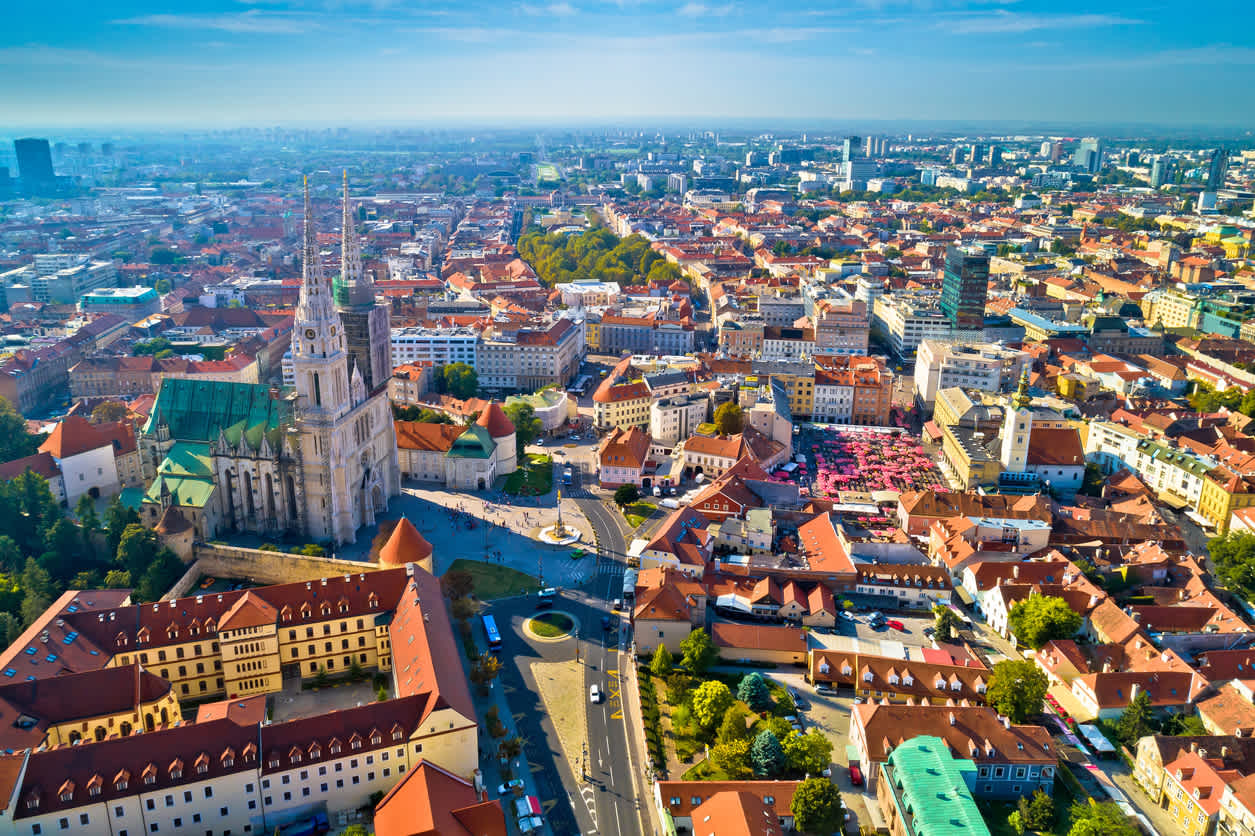
Kroatien (kroatisch [xř̩ʋaːtskaː], amtlich Republik Kroatien, kroatisch ) ist ein Staat in der Übergangszone zwischen Mittel- und Südosteuropa. Kroatien ist Mitglied der Europäischen Union, der NATO, der Welthandelsorganisation, der OSZE und der Vereinten Nationen. Hauptstadt und größte Stadt ist Zagreb, zu den weiteren Großstädten zählen Split, Rijeka und Osijek.
Das Staatsgebiet liegt östlich des Adriatischen Meeres und zum Teil im Südwesten der Pannonischen Tiefebene. Es grenzt im Nordwesten an Slowenien, im Norden an Ungarn, im Nordosten an Serbien, im Osten an Bosnien und Herzegowina und im Südosten an Montenegro. Das Gebiet der einstigen Republik Ragusa (Dubrovačka Republika), das heute den südlichsten Teil des Staates ausmacht, verfügt über keine direkte Landverbindung zum übrigen Staatsgebiet, da der wenige Kilometer breite Meereszugang von Bosnien und Herzegowina dazwischen liegt; das Gebiet um Dubrovnik bildet damit die einzige Exklave des Landes.
克罗地亚共和国(克罗地亚语:Republika Hrvatska),通称克罗地亚(克罗地亚语:Hrvatska,音译赫尔瓦茨卡),是一个位于中欧、地中海和巴尔干半岛交会处的单一议会共和制国家,首都与最大城市为萨格勒布。克国将行政区划分为20个县与一个直辖市兼首都的萨格勒布,其领土面积为56,538平方公里。克罗地亚气候多样,同时具备大陆性与地中海型气候,并于亚得里亚海沿岸拥有超过1000座岛屿。2019年克罗地亚人口约为407万人,多数为克罗地亚人,自从克罗地亚由南斯拉夫独立后至今该国如同大部分巴尔干半岛国家一样人口持续减少。
克罗地亚民族自公元7世纪迁移到现在的克国领土生活,他们于9世纪时建立了两个公国,后于925年由托米斯拉夫将其统一为王国,并成了第一位国王。其历史是一连串与保加利亚第一帝国、拜占庭帝国和匈牙利王国的冲突,并与威尼斯竞争亚德里亚海东岸。该王国从10世纪开始在统治区域推广克罗地亚语并因此与教宗发生冲突。11世纪后期克罗地亚试图保卫其被拜占庭帝国侵犯的达尔马提亚,此时王国在佩塔尔·克雷希米尔四世(1058年-1074年)与狄米塔·兹沃尼米尔(1075年-1089年)统领时期发展到鼎盛。公元1091年斯特凡二世去世,特皮米洛维齐王朝绝嗣,克罗地亚发生继承内战,直到1102年王位由匈牙利国王卡尔曼继位,克罗地亚与匈牙利组成共主联邦。1463年,奥斯曼帝国征服了波斯尼亚,对克罗地亚构成相当的威胁,随后前者又继续扩张,克罗地亚于是与奥斯曼帝国展开近百年的抵抗战争。面对帝国的威胁,1527年,克国议会推选哈布斯堡王朝的奥地利国王——斐迪南一世为克罗地亚国王,随后约四百年里,克罗地亚的统治权在匈牙利与奥地利帝国之间多次易手。
1918年,第一次世界大战结束,奥匈帝国解体,独立出了包括克罗地亚领土在内的斯洛文尼亚人-克罗地亚人和塞尔维亚人国,这个短命的政权后来成为南斯拉夫王国。1941年4月,南斯拉夫王国被轴心国入侵,南斯拉夫战役爆发,王国被德、义、匈牙利王国和保加利亚王国支解,纳粹德国和意大利王国于当地包括波黑在内扶持了傀儡政权——克罗地亚独立国。战后,克罗地亚独立国灭亡,克人成立共和国加盟“南斯拉夫联邦人民共和国”,成为社会主义国家。1991年6月,克罗地亚宣布自南斯拉夫联邦独立,其宣言于同年10月8日开始生效。随后爆发与反对国家分裂的联邦军之间的战争,经过长达四年的战事,克国取得了胜利,成为主权国家。
克罗地亚至今已是个极高人类发展指数的国家,国民拥有全民健康保险和免费的中小学教育,国家也积极透过企业和公家机关推展文化、媒体与出版产业。克国经济以服务业为主,其次为工业和农业,国家也掌控了部分的经济结构,并给予大量的财政支持。国际货币基金组织将该国列为新兴发展中的经济体,而世界银行也将其评作高收入国家。克国最重要的贸易伙伴为欧盟,也因此自2000年起,克国政府开始大量投资基础设施,特别是泛欧走廊一带的交通线。克国同时也为联合国、欧洲委员会、北大西洋公约组织、世界贸易组织、中欧自由贸易协定和地中海联盟的成员国,2013年7月1日还加入了欧盟,成为其第28个成员国。克罗地亚也积极参与联合国维和部队事务,同北约驻军于阿富汗,亦于2008至2009年担任联合国安理会的非常任理事国。
クロアチア共和国(クロアチアきょうわこく、Republika Hrvatska)、通称クロアチアは、東ヨーロッパ、バルカン半島に位置する共和制国家である。首都はザグレブ。
本土では西にスロベニア、北にハンガリー、東にボスニア・ヘルツェゴビナ、セルビアと国境を接している。南はアドリア海に面し対岸はイタリア、飛び地のドゥブロヴニクでは東にモンテネグロと接している。
Croatia (/kroʊˈeɪʃə/ (![]() listen), kroh-AY-shə; Croatian: Hrvatska, pronounced [xř̩ʋaːtskaː]), officially the Republic of Croatia (Croatian: Republika Hrvatska, (
listen), kroh-AY-shə; Croatian: Hrvatska, pronounced [xř̩ʋaːtskaː]), officially the Republic of Croatia (Croatian: Republika Hrvatska, (![]() listen)),[e] is a country at the crossroads of Central and Southeast Europe on the Adriatic Sea. Croatia borders Slovenia to the northwest, Hungary to the northeast, Serbia to the east, Bosnia and Herzegovina and Montenegro to the southeast, and shares a maritime border with Italy to the west and southwest. Its capital and largest city, Zagreb, forms one of the country's primary subdivisions, with twenty counties. Croatia has an area of 56,594 square kilometres (21,851 square miles) and a population of 4.07 million.
listen)),[e] is a country at the crossroads of Central and Southeast Europe on the Adriatic Sea. Croatia borders Slovenia to the northwest, Hungary to the northeast, Serbia to the east, Bosnia and Herzegovina and Montenegro to the southeast, and shares a maritime border with Italy to the west and southwest. Its capital and largest city, Zagreb, forms one of the country's primary subdivisions, with twenty counties. Croatia has an area of 56,594 square kilometres (21,851 square miles) and a population of 4.07 million.
The Croats arrived in the 6th century and organised the territory into two duchies by the 9th century. Croatia was first internationally recognised as independent on 7 June 879 during the reign of Duke Branimir. Tomislav became the first king by 925, elevating Croatia to the status of a kingdom. During the succession crisis after the Trpimirović dynasty ended, Croatia entered a personal union with Hungary in 1102. In 1527, faced with Ottoman conquest, the Croatian Parliament elected Ferdinand I of Austria to the Croatian throne. In October 1918, the State of Slovenes, Croats and Serbs, independent from Austria-Hungary, was proclaimed in Zagreb, and in December 1918, merged into the Kingdom of Yugoslavia. Following the Axis invasion of Yugoslavia in April 1941, most of Croatia was incorporated into a Nazi installed puppet state, the Independent State of Croatia. A resistance movement led to the creation of the Socialist Republic of Croatia, which after the war became a founding member and constituent of the Socialist Federal Republic of Yugoslavia. On 25 June 1991, Croatia declared independence, and the War of Independence was fought for four years following the declaration.
A sovereign state, Croatia is a republic governed under a parliamentary system. It is a member of the European Union, the United Nations, the Council of Europe, NATO, the World Trade Organization, and a founding member of the Union for the Mediterranean. An active participant in United Nations peacekeeping, Croatia has contributed troops to the International Security Assistance Force and took a nonpermanent seat on the United Nations Security Council for the 2008–2009 term. Since 2000, the Croatian government has invested in infrastructure, especially transport routes and facilities along the Pan-European corridors.
Croatia is classified by the World Bank as a high-income economy and ranks very high on the Human Development Index. Service, industrial sectors, and agriculture dominate the economy, respectively. Tourism is a significant source of revenue, with Croatia ranked among the 20 most popular tourist destinations. The state controls a part of the economy, with substantial government expenditure. The European Union is Croatia's most important trading partner. Croatia provides social security, universal health care, and tuition-free primary and secondary education while supporting culture through public institutions and corporate investments in media and publishing.
La Croatie, en forme longue la république de Croatie, en croate : Hrvatska et Republika Hrvatska écouter, est un pays d'Europe centrale et du Sud, indépendant depuis 1991 lors de la dislocation violente de la Yougoslavie. Il s'étend depuis les confins de l'extrémité orientale des Alpes au nord-ouest et depuis les plaines pannoniennes au nord-est, jusqu'au littoral de la mer Adriatique au sud-sud-ouest, en passant par le massif montagneux des Alpes dinariques au centre.
Elle est entourée par la Slovénie, la Hongrie, la Serbie, la Bosnie-Herzégovine et le Monténégro. Sa capitale est Zagreb et elle est membre de l'Union européenne depuis le 1er juillet 20135, de l'OMC depuis 20006 et de l'OTAN depuis 2009.
La Croazia, ufficialmente Repubblica di Croazia (in croato Republika Hrvatska), è uno Stato indipendente dell'Unione europea con una popolazione di 4076246 abitanti nel 2019. La sua capitale è Zagabria.
Confina a nord con la Slovenia, a nord-est con l'Ungheria, a est con la Serbia, a sud con la Bosnia ed Erzegovina e il Montenegro, mentre a ovest è affacciata sul mare Adriatico. La sua superficie territoriale è di 56594 km² di cui 620 di acque interne[7].
La Croazia è una repubblica parlamentare[7] la cui lingua ufficiale è il croato. La regione istriana adotta ufficialmente il bilinguismo (croato e italiano), ma la sua attuazione varia a livello comunale[8].
Tra il 1102 e il 1918 la Croazia fu unita al Regno d'Ungheria, seguendone le sorti; fu successivamente un'unità territoriale della Jugoslavia fino al 1991 — fatta eccezione per l'effimero Stato Indipendente di Croazia, Paese-fantoccio al soldo della coalizione nazifascista dell'Asse italo-tedesco — divenendone indipendente all'inizio delle guerre dei Balcani. La Croazia aderisce alla NATO dal 1º aprile 2009[9] e dal 1º luglio 2013 è il 28º membro dell'Unione europea[2]. Al pari di Cipro, Bulgaria e Romania, la Croazia fa parte di quei Paesi sottoscrittori della convenzione di Schengen pur restando fuori dal relativo spazio per mancanza di adeguamenti tecnici, mantenendo quindi i controlli alle frontiere.
Il Paese ha due giorni di festa nazionale: il 25 giugno, anniversario dell'indipendenza dichiarata, e l'8 ottobre, anniversario di quella effettiva, dalla Jugoslavia nel 1991.
Croacia (en croata, Hrvatska, AFI: [xř̩.ʋaː.ʦkaː]), oficialmente República de Croacia (Republika Hrvatska ![]() escuchar (?·i)), es uno de los veintisiete estados soberanos que forman la Unión Europea, el cual está ubicado entre Europa Central, Europa meridional y el mar Adriático; limita al noreste con Hungría, al este con Serbia, al sureste con Bosnia-Herzegovina y Montenegro, al noroeste con Eslovenia y al suroeste con el mar Adriático; donde comparte una frontera marítima con Italia.
escuchar (?·i)), es uno de los veintisiete estados soberanos que forman la Unión Europea, el cual está ubicado entre Europa Central, Europa meridional y el mar Adriático; limita al noreste con Hungría, al este con Serbia, al sureste con Bosnia-Herzegovina y Montenegro, al noroeste con Eslovenia y al suroeste con el mar Adriático; donde comparte una frontera marítima con Italia.
Su capital y ciudad más poblada es Zagreb. Tiene 56 594 km² de extensión territorial1 —esta cifra incluye las más de mil islas (1185) que se ubican frente a la costa del mar Adriático— y cuenta con un clima variado, en su mayor parte continental y mediterráneo. En cuanto a la administración política, el país está dividido en veinte condados y la ciudad de Zagreb. Su población asciende a más de 4.29 millones de habitantes, la mayor parte de ellos son croatas de religión católica.
A principios del siglo VII los croatas arribaron a la zona y dos siglos más tarde se organizaron en dos ducados. En el año 925 Tomislav se convirtió en el primer rey, elevando el estatus del estado a un reino. El Reino de Croacia mantuvo su soberanía por casi dos siglos, y alcanzó su apogeo durante el reinado de Pedro Krešimir IV y Demetrio Zvonimir. Croacia formó una unión personal con Hungría en 1102. En 1527, amenazado por la expansión otomana, el parlamento croata eligió a Fernando I de Habsburgo como sucesor del trono croata. En 1918, tras la Primera Guerra Mundial, formó parte del efímero Reino de los Serbios, Croatas y Eslovenos, el cual se había separado de Austria–Hungría, y que posteriormente se transformó en el Reino de Yugoslavia. Durante la Segunda Guerra Mundial se fundó un Estado títere de la Alemania nazi. Luego de la guerra, Croacia fue un miembro fundador y elemento federal de la Segunda Yugoslavia, un Estado socialista. En junio de 1991 Croacia declaró su independencia, la cual fue reconocida el 8 de octubre de ese año. La guerra croata de Independencia tuvo lugar en los cuatro años sucesivos a la declaración.
En 2012 Croacia mantenía un Índice de Desarrollo Humano muy alto. El Fondo Monetario Internacional la clasificó como una economía emergente y en desarrollo, mientras que el Banco Mundial la identificó como una economía de altos ingresos. Croacia es miembro de la ONU, el Consejo de Europa, la OTAN, la Organización Mundial de Comercio y es un miembro fundador de la Unión por el Mediterráneo. Además, en julio de 2013 Croacia accedió a la Unión Europea. Como un miembro activo de las Fuerzas de paz de las Naciones Unidas, ha contribuido con tropas a la misión de seguridad de la OTAN en Afganistán y durante el periodo de 2008 a 2009 ocupó un asiento del Consejo de Seguridad de la ONU.
La economía croata está dominada por el sector servicios, seguido por la industria y la agricultura. El turismo es una fuente de ingresos importante durante el verano, ya que el país se encuentra dentro de los veinte destinos turísticos más visitados en el mundo. El Estado controla una parte de la economía, con un gasto gubernamental importante y su principal socio comercial es la Unión Europea. Desde el 2000 el país invirtió en infraestructura, especialmente en caminos y medios de transporte, así como en los corredores Pan-Europeos. El Estado croata provee de un sistema de salud universal y educación primaria y secundaria gratuita, al mismo tiempo que apoya la cultura por medio de diversas instituciones públicas e inversiones en los medios de comunicación y la literatura.
Хорва́тия (хорв. Hrvatska [xř̩ʋaːtskaː]), официально — Респу́блика Хорва́тия (хорв. Republika Hrvatska) — государство на юге Центральной Европы или в Южной Европе, частично на западе Балканского полуострова, бывшая союзная республика в составе Югославии, ставшая независимой в 1991 году. Население, по данным на 30 июня 2020 года, составляет 4 227 746 человек, территория — 56 594 км². Занимает 127-е место в мире по численности населения и 128-е по территории.
Форма правления — парламентская республика. Пост премьер-министра с 19 октября 2016 года занимает Андрей Пленкович, а пост президента с 19 февраля 2020 — Зоран Миланович.
Столица и крупнейший город — Загреб. Хорватия граничит на северо-западе со Словенией, на северо-востоке — с Венгрией и Сербией, на юге и востоке — с Боснией и Герцеговиной и Черногорией; на западе омывается Адриатическим морем и имеет морскую границу с Италией.
Государственная валюта — куна.
Страна является членом Организации Объединённых Наций с 1992 года; ОБСЕ, Совета Европы, НАТО с 2009 года; Европейского союза с 2013 года.

 Geography
Geography

 Geography
Geography
 ***IMF Developed countries
***IMF Developed countries
 IMF Developed countries
IMF Developed countries
 IMF Developed countries
IMF Developed countries
 TOP6
TOP6
 Latvia
Latvia

 Mitglieder der NATO
Mitglieder der NATO

 States of Europe
States of Europe

Lettland (lettisch Latvija) ist ein Staat in Nordeuropa, im Zentrum des Baltikums gelegen. Es grenzt im Süden an Litauen, im Südosten an Weißrussland, im Osten an Russland, im Norden an Estland und im Westen an die Ostsee. Hauptstadt und größte Stadt Lettlands sowie des ganzen Baltikums ist Riga.
Seit dem Inkrafttreten der EU-Erweiterung am 1. Mai 2004 ist Lettland Mitglied der Europäischen Union. Seit dem 1. Januar 2014 ist Lettland Teil der Eurozone.
